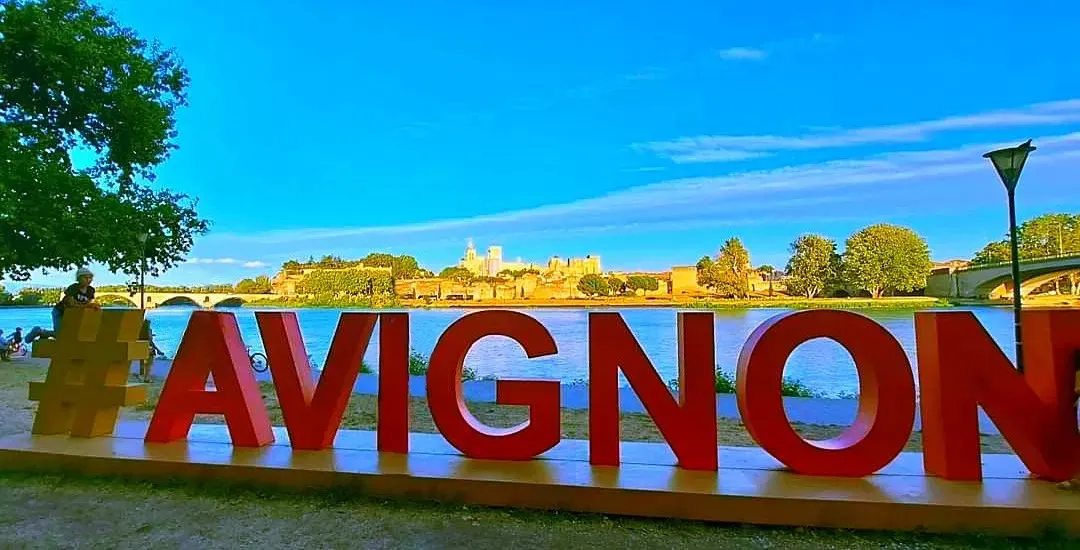
My interest in the French city of Avignon arose back in my school years, when novels of the Damned Kings series written by Maurice Druon began to appear one after another in our home library. Reading these books I, in fact, learned that in the XIV century, the first people of the Catholic Church lived not in Rome, but in Avignon.

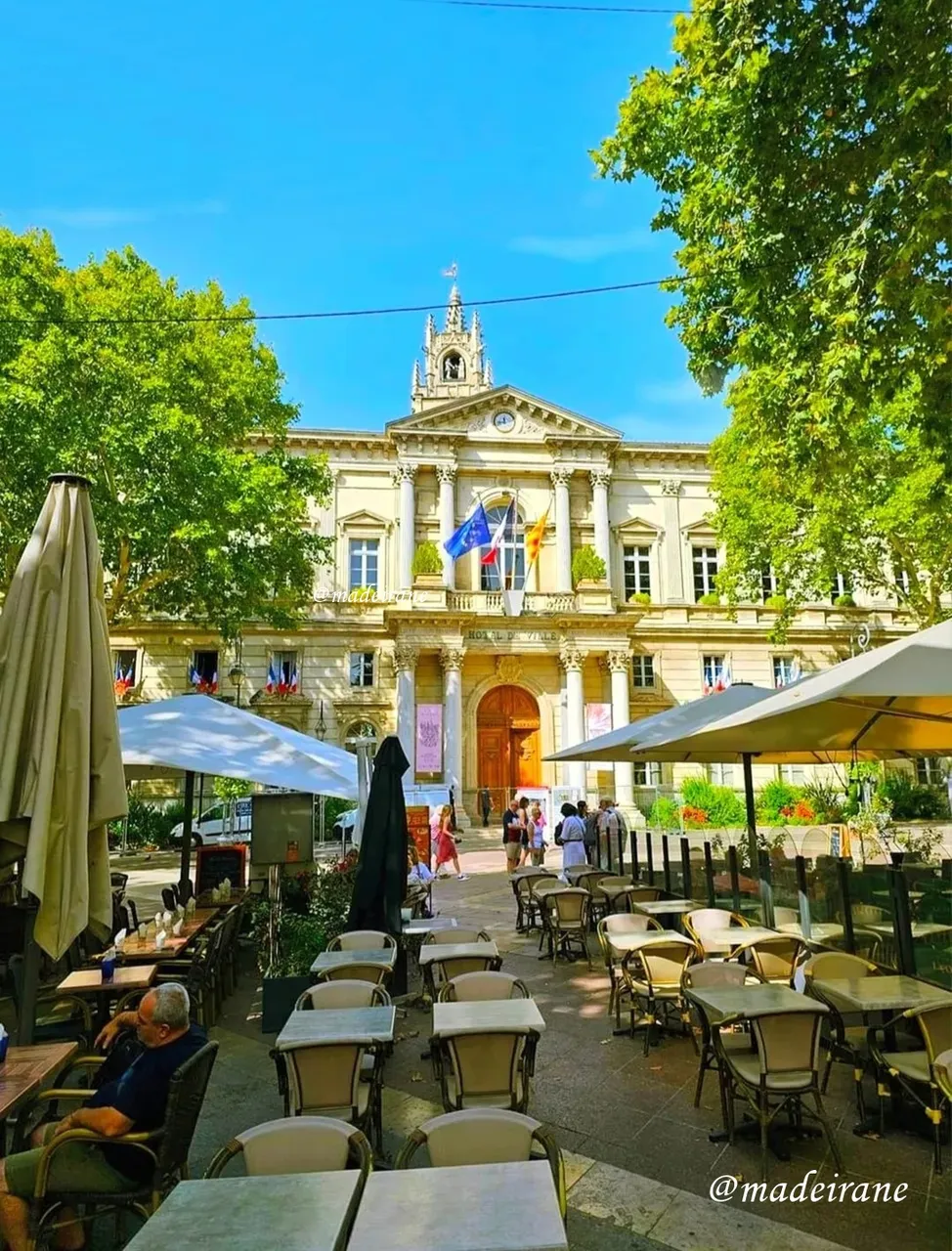
Despite its two thousand years of history, Avignon continues to be a quiet provincial town, but with a rich history dating back to the 4th century BC. Avignon at one time was part of the Greek colony, then passed to the Romans, then to the Gauls, then to the Arabs, until finally it became part of France.
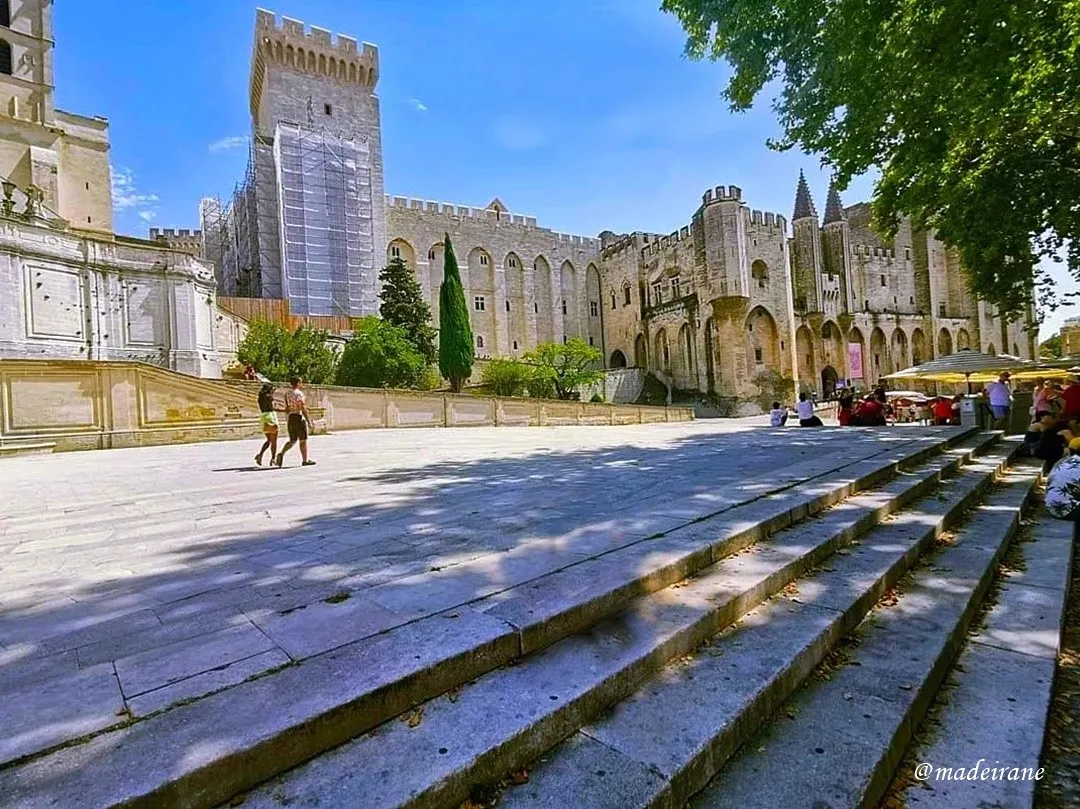
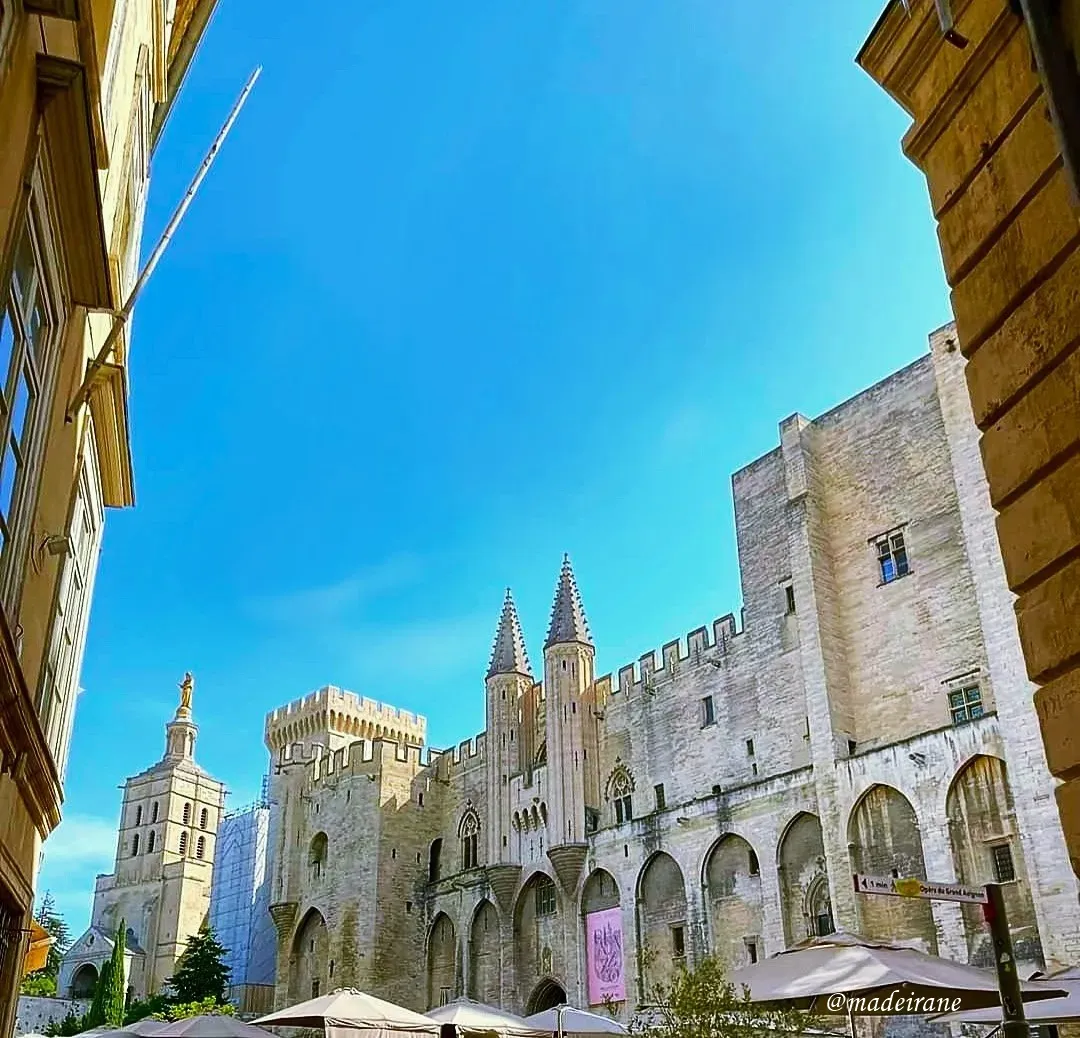
The terms that make up the charm of Avignon, from my point of view, are exactly two. But they are absolutely enough to feel warm feelings for this ancient city. The first is a crazy (in a positive sense) set of treasures of medieval architecture and marvelous views of the Rhone and the Durance.
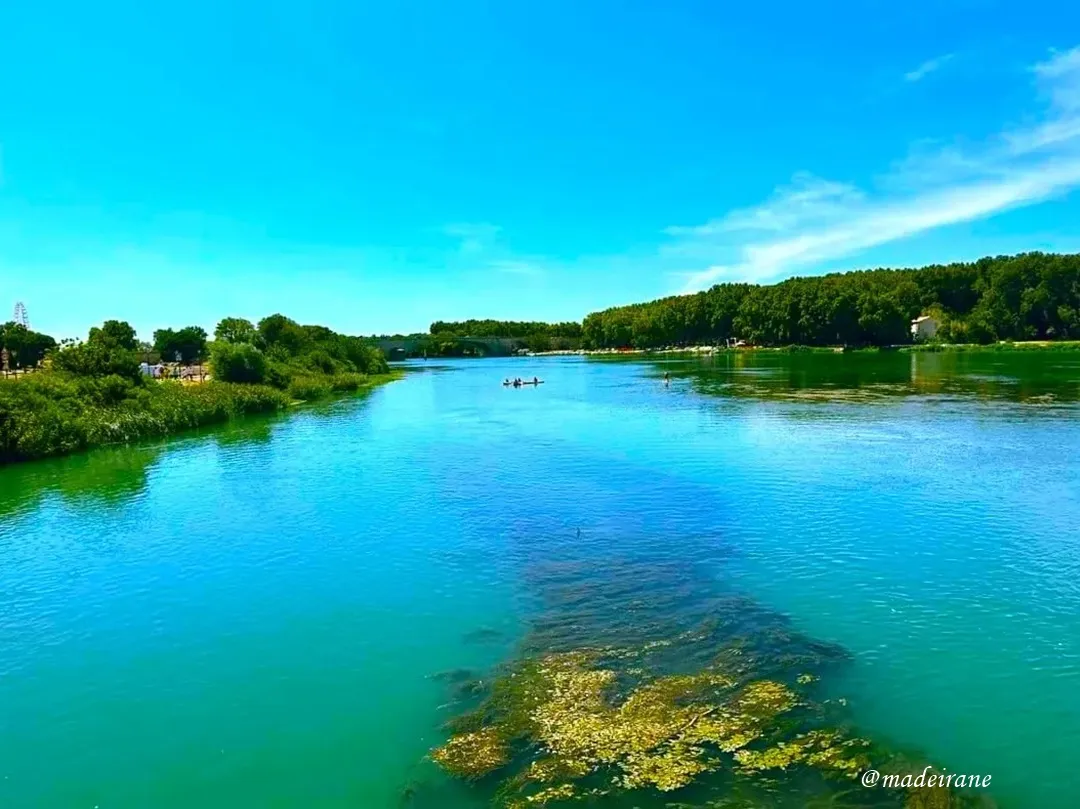
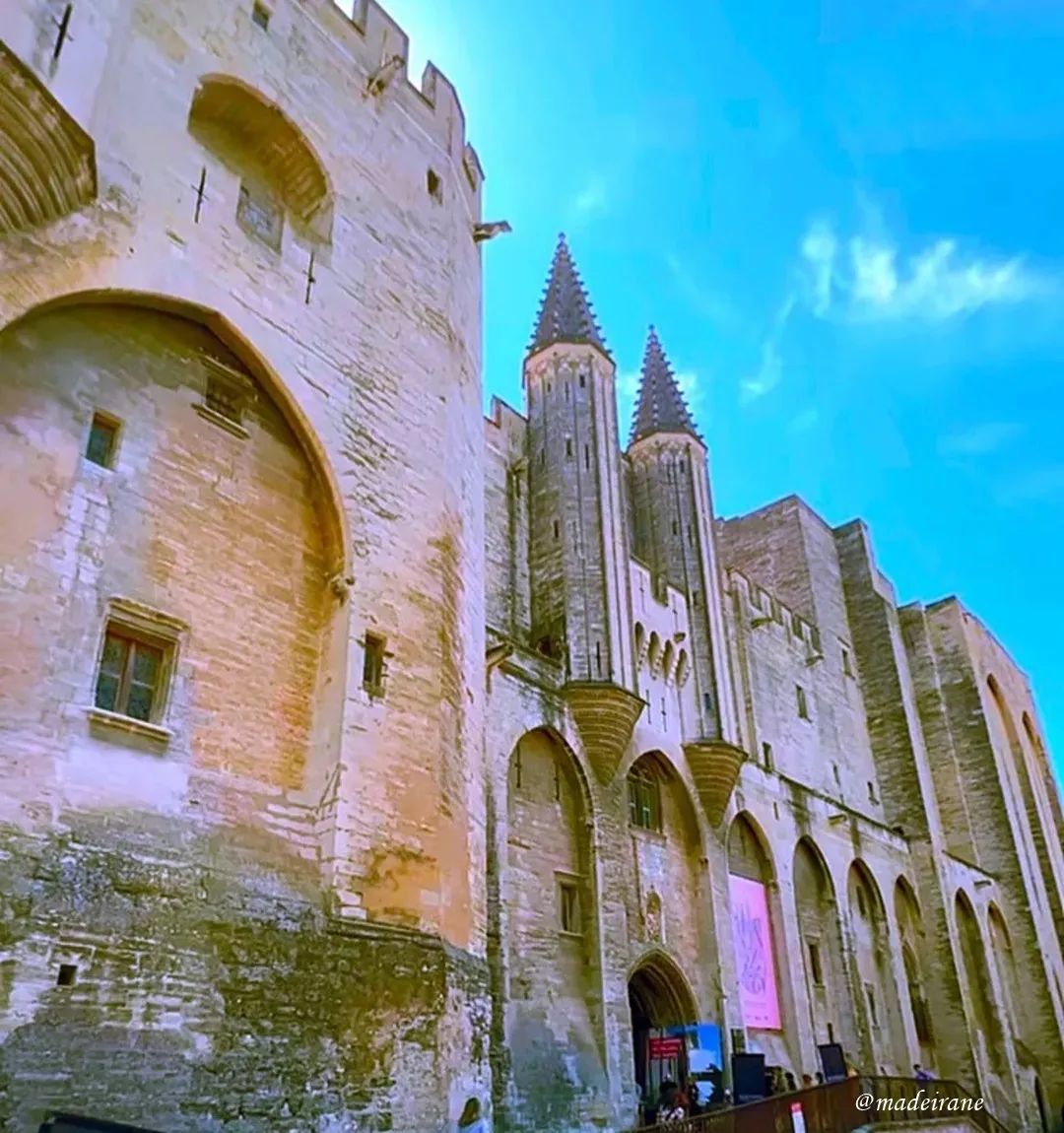
Entering the old city, we immediately found ourselves in the arms of mighty fortress walls and dozens of watchtowers, preserved from the deep Middle Ages, that is, from about the 14th century. Nostradamus, Petrarch (who met his love and muse - Donna Laura), Rabelais walked along its streets. And amazing examples of Romanesque, Gothic, Baroque and Classicism hide behind the walls and trees.
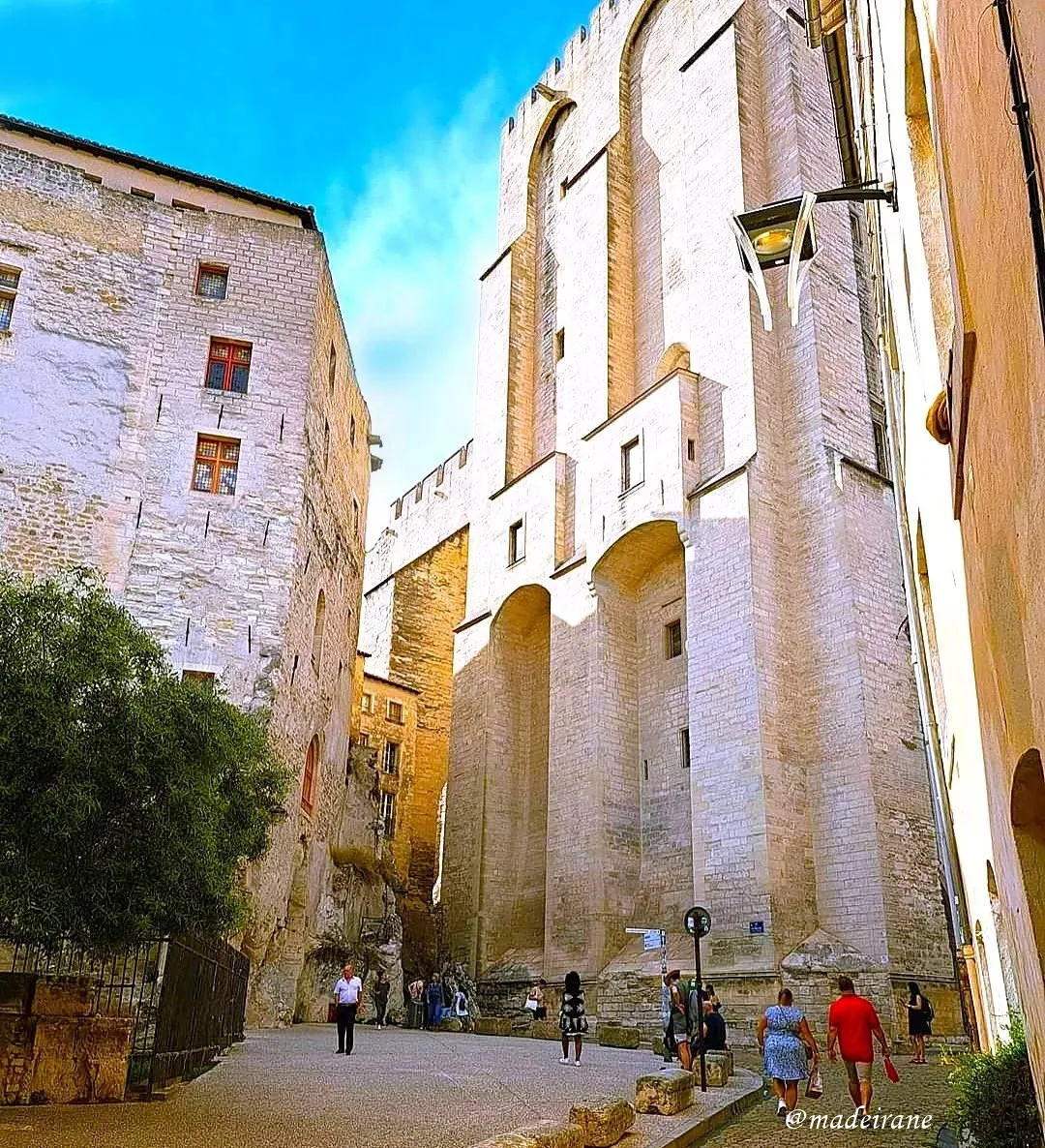
Since it was not yet nine in the morning, I had to wait a bit for the fulfillment of my main Avignon dream - a visit to the Papal Palace. Therefore, before the ticket office opened, we decided to explore the palace from the outside. And at the same time, its equally majestic neighbor - the Cathedral of Notre-Dame des Doms.
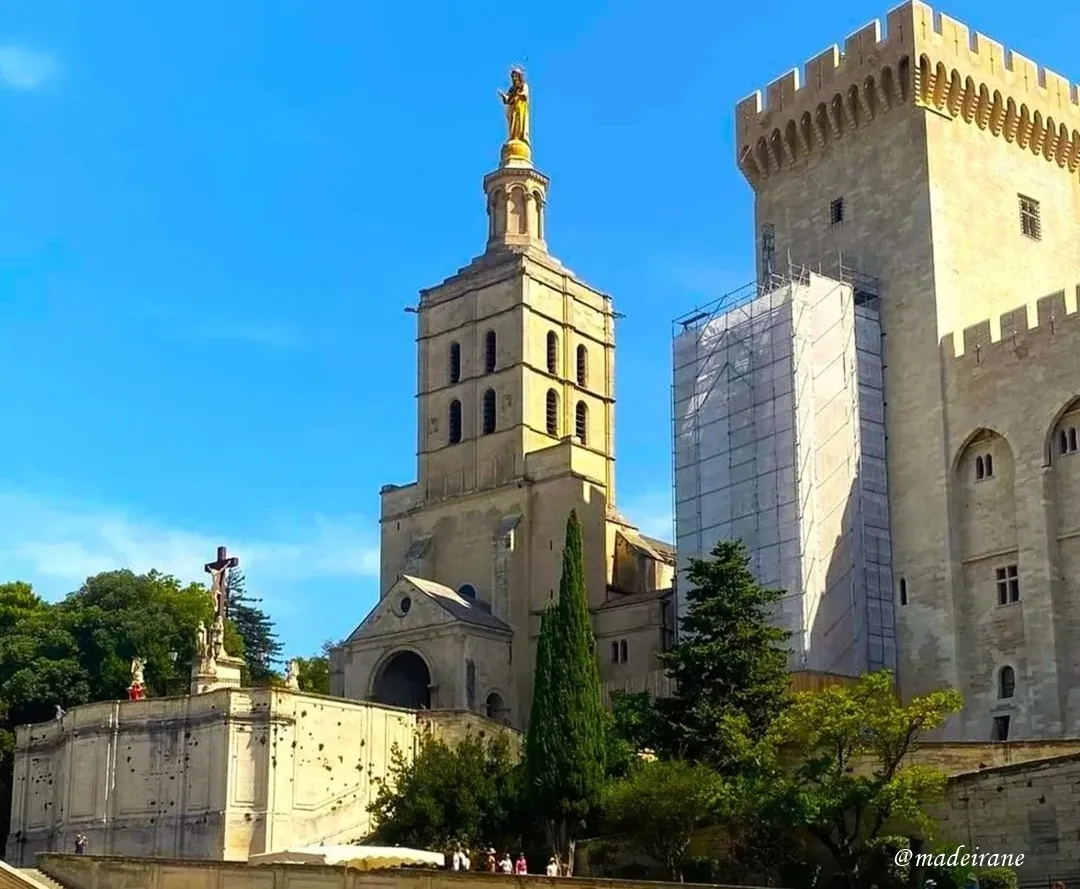
And what picturesque corners can be found in the vicinity of the palace and the cathedral! How much austere beauty and mystery was in the street de la Peyrolerie, enveloping the Papal Palace! These tall gigantic walls, this winding narrow passage... It seemed that in the final round, either a cave with outlandish creatures or a portal to some mysterious world would appear around the corner.
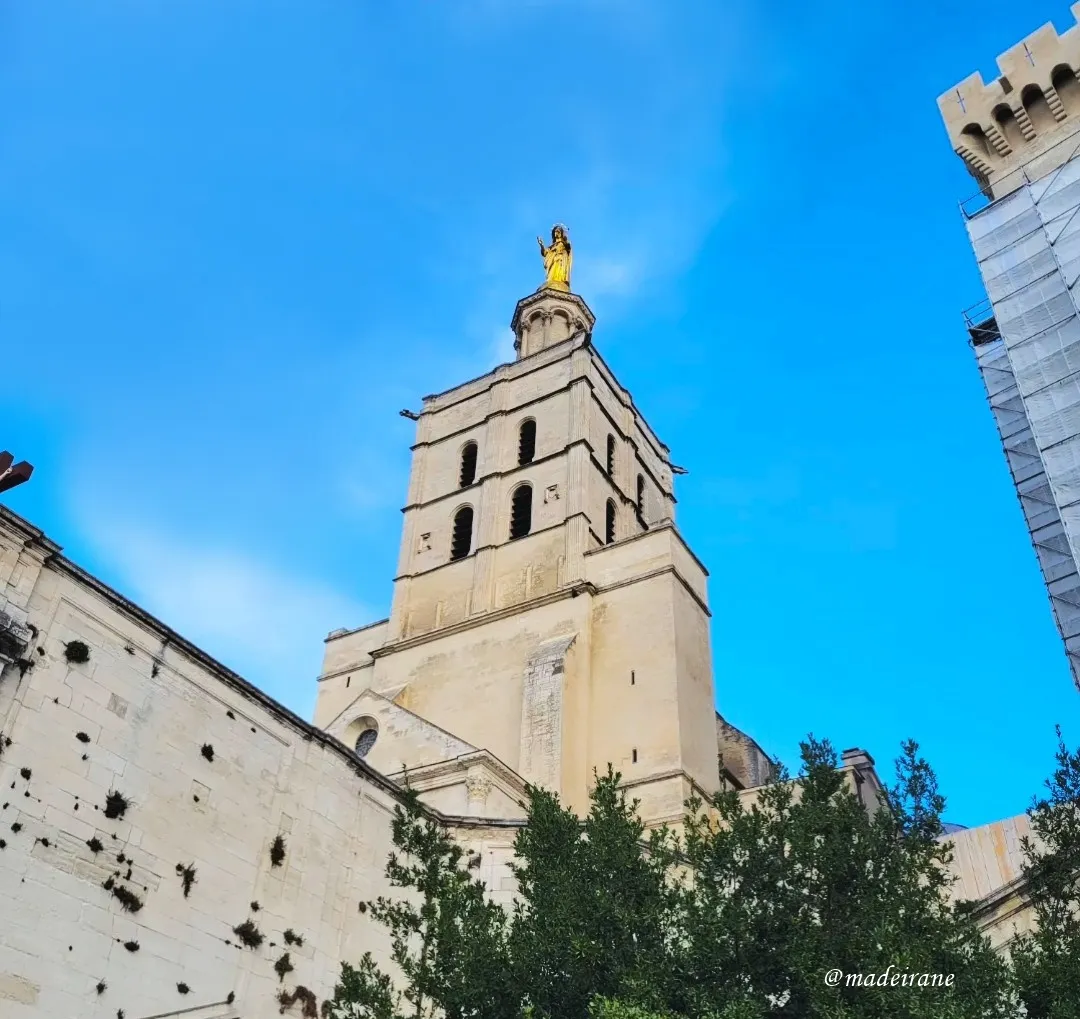
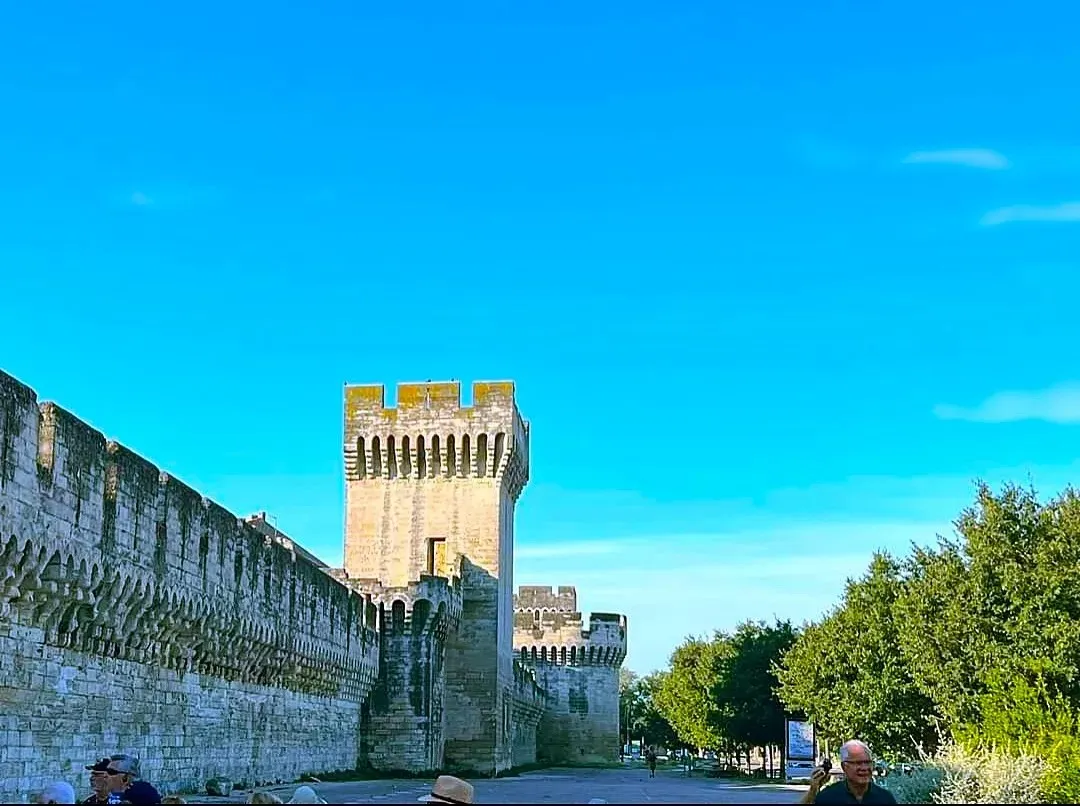
From the bell tower of Notre-Dame des Doms, the golden Madonna watches the city vigilantly.

Oh, how I wanted to see the Avignon Notre Dame from the inside (especially since it is two centuries older than the palace), because I read a lot about its frescoes and sculptures.
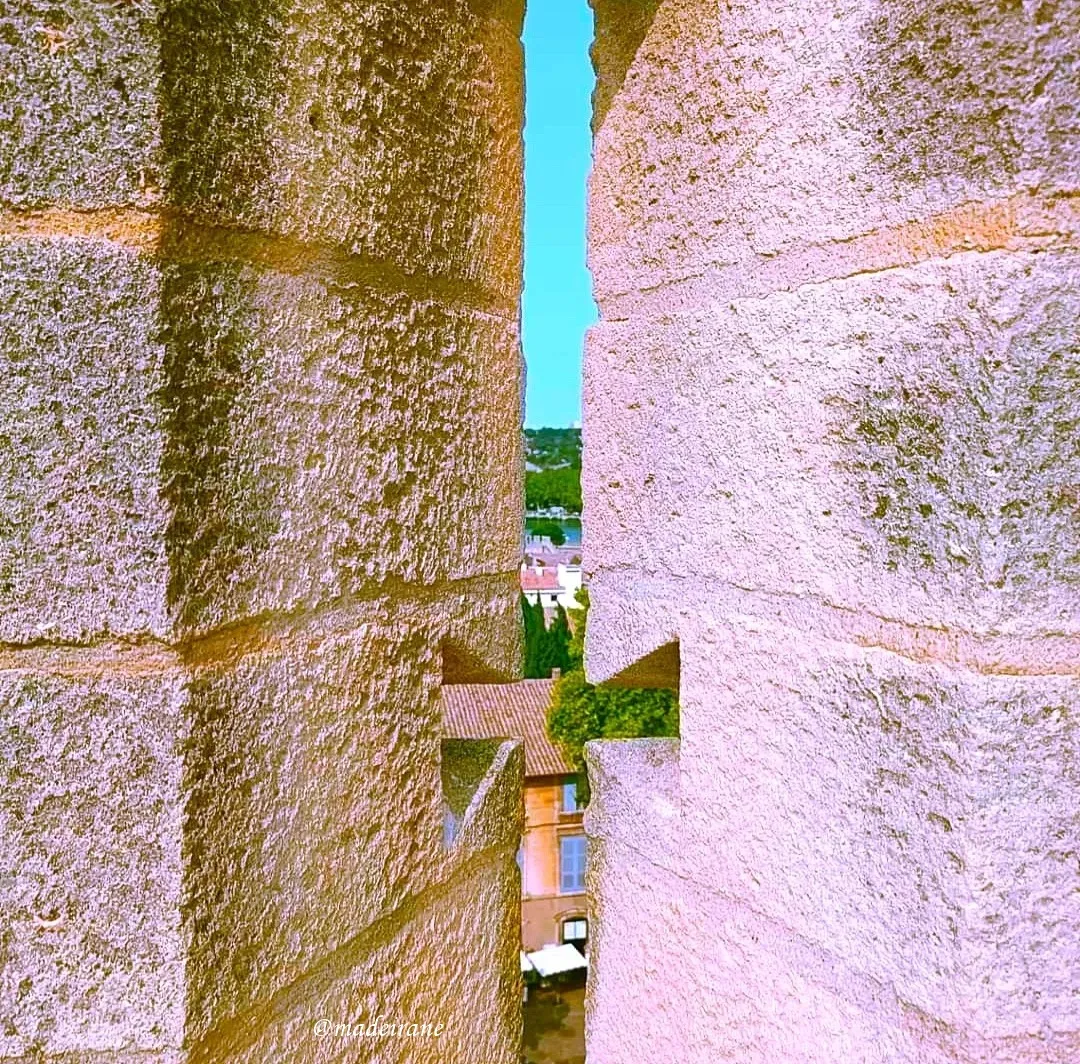
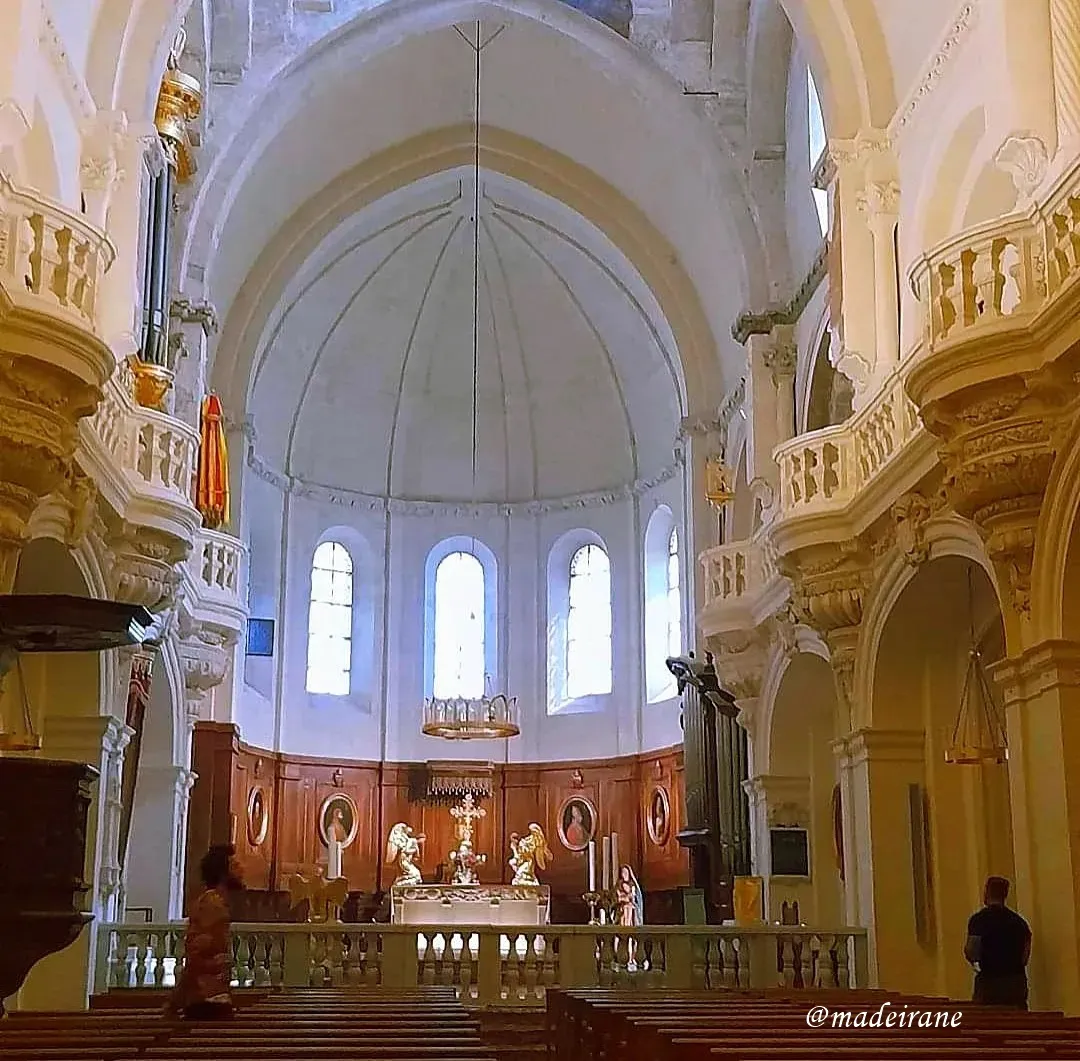
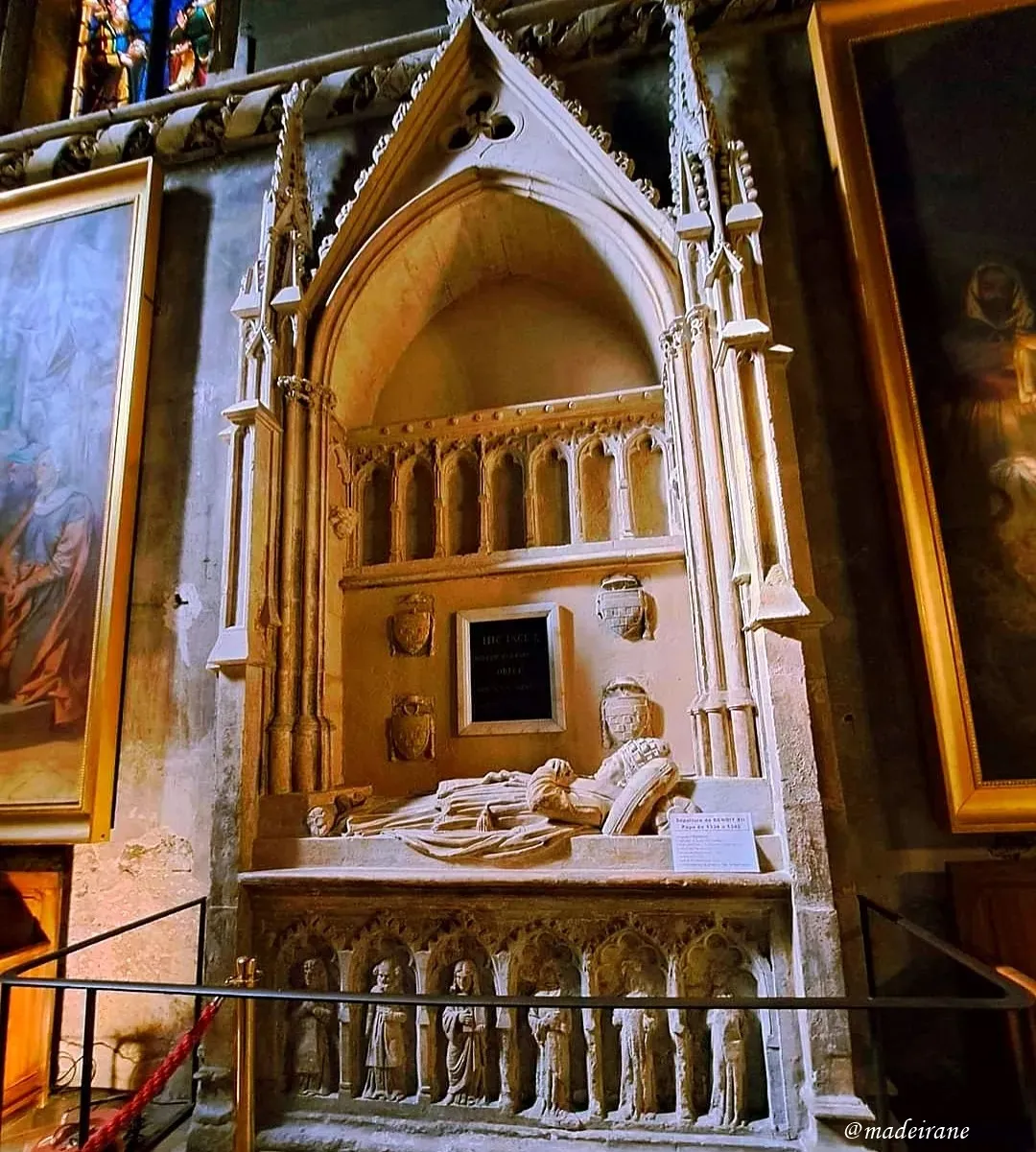
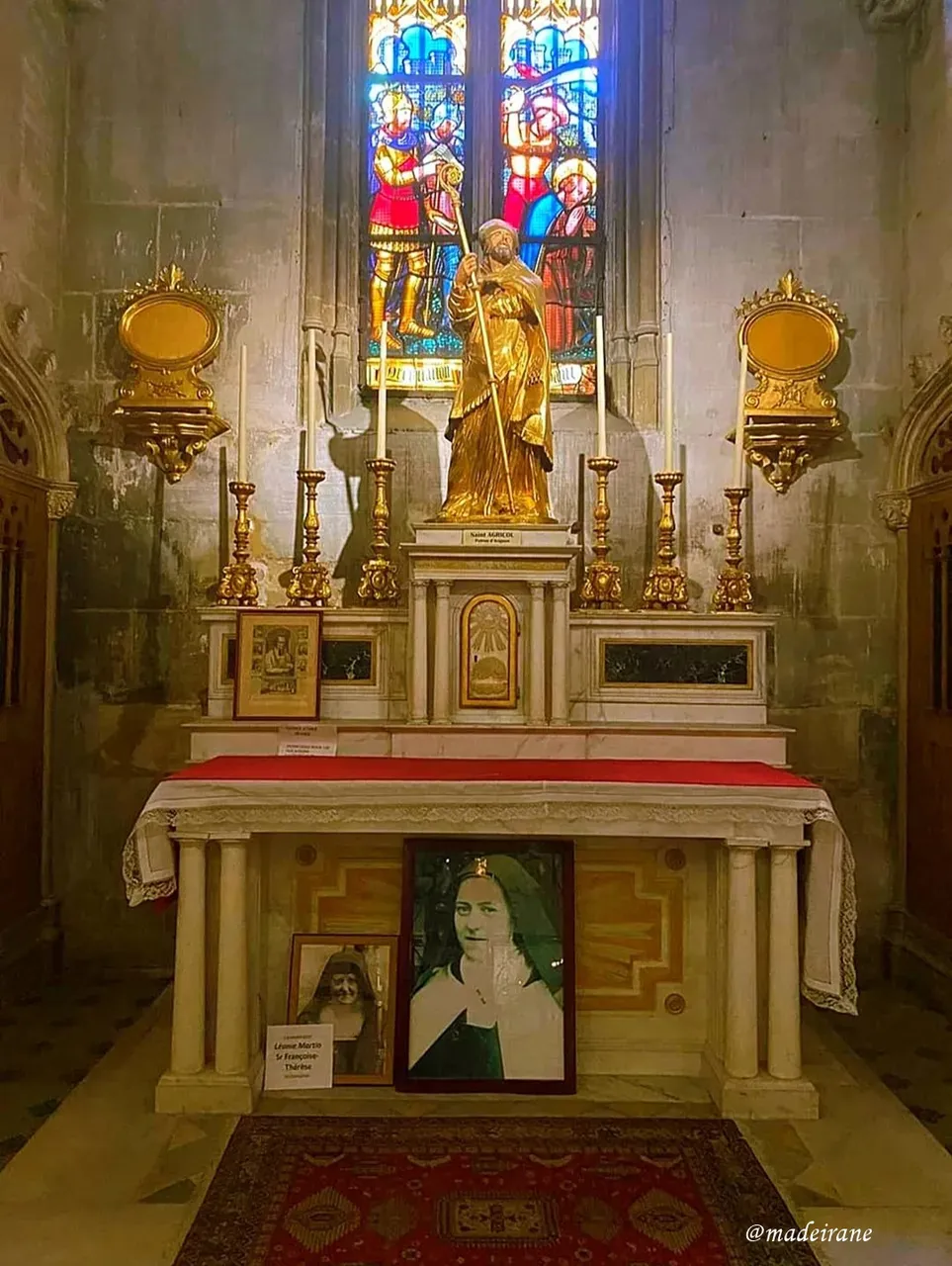
At the entrance to Notre-Dame des Doms, a sculptural composition is installed - the crucified Christ, before whom stone angels knelt.
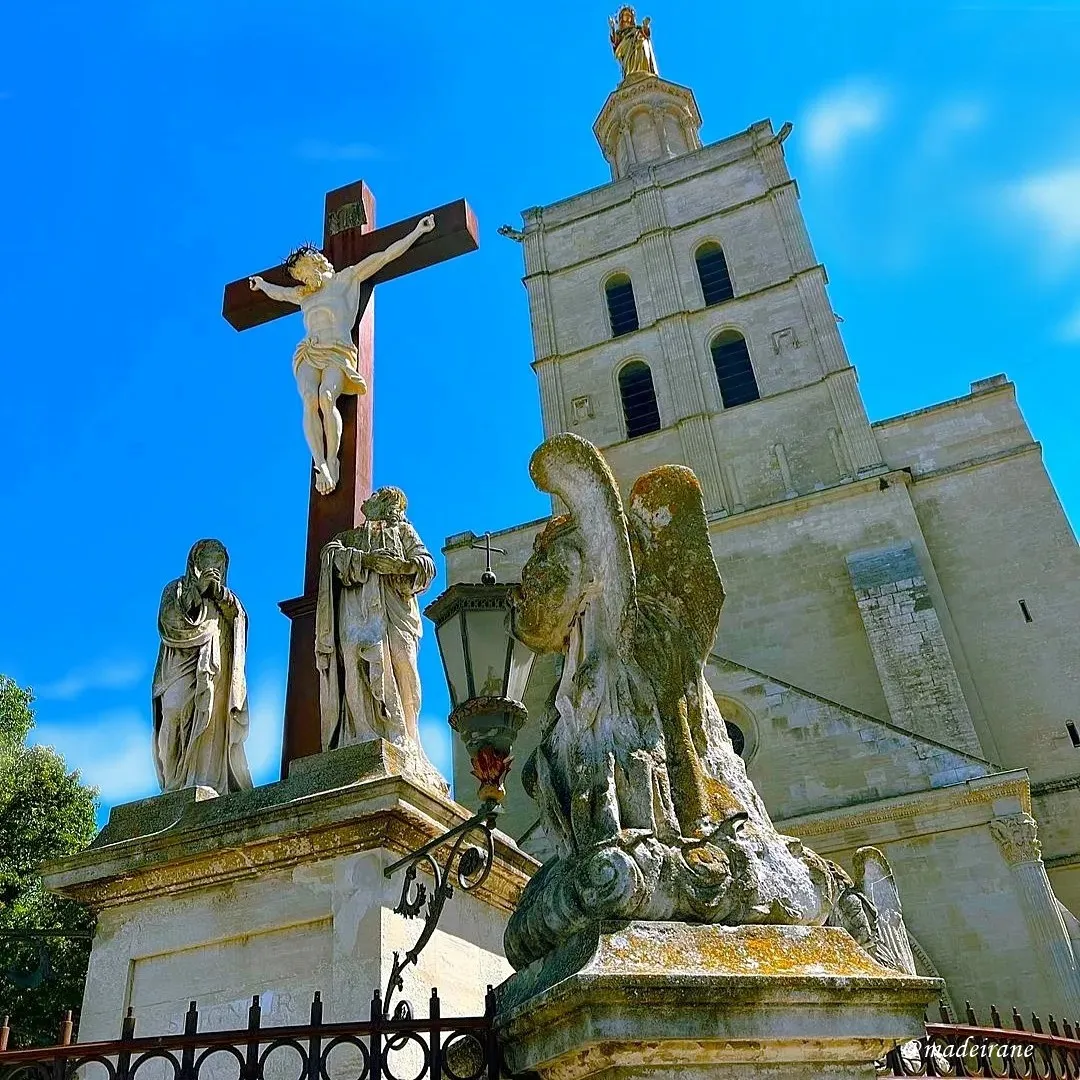
Not far from the Papal Palace of Notre-Dame des Doms, there is another object on the UNESCO list - the Petit Palais Palace, built in the 13th century as a residence for local bishops. There is a wonderful collection of works of art - with works by Botticelli, Carpaccio and other masters of the Italian Renaissance!

Taking advantage of a small margin of time, we look at the Clock Square. The area is rather big, but there is especially nowhere to turn around, because cafe and restaurant tables rule the ball there. Why is it called "Clock Square"? An openwork answer to this question, composed in the Gothic style, rises directly above it. Quite right: such a name - because of the clock tower left from the destroyed City Hall.
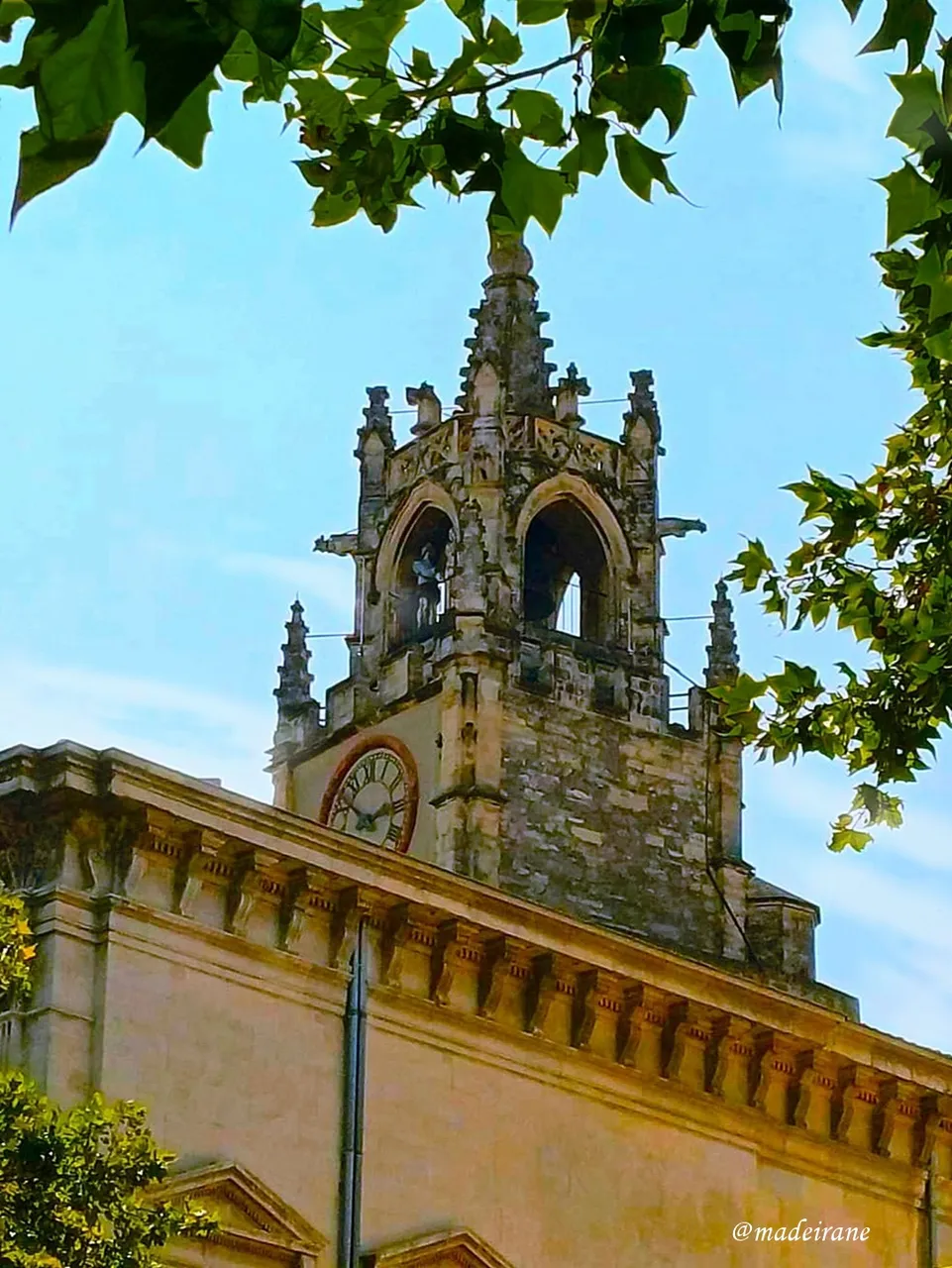
Later, the Town Hall was replaced by the City Hall building, which appeared in the 19th century. On it, as expected, the flags of Provence, France and the EU and the wonderful, but difficult slogan "Liberty, equality, fraternity" are hung out.

A short walk from the city hall is the building of the Opera House. Statues sit at its entrance - Molière and Corneille. The memory of two outstanding playwrights is immortalized here not by chance: the burnt comedy theater used to be in the same place. What is curious, despite the name "Opera", in the repertoire of the theater there are also ordinary performances.
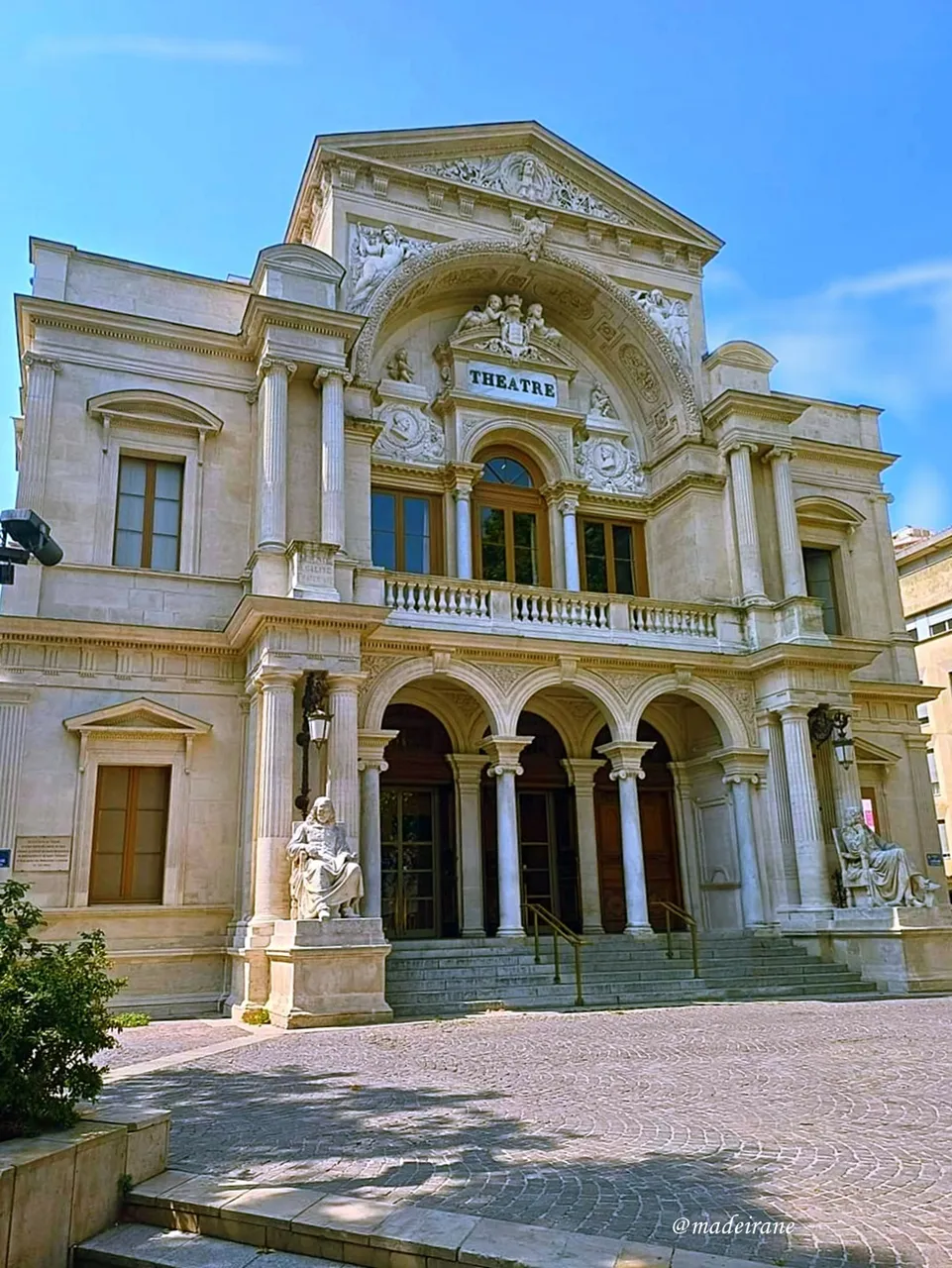
But if we talk about the squares of Avignon, I liked not the Clock Square more, but the Crillon Square - for its intimacy and comfort with a slight touch of bohemianism.
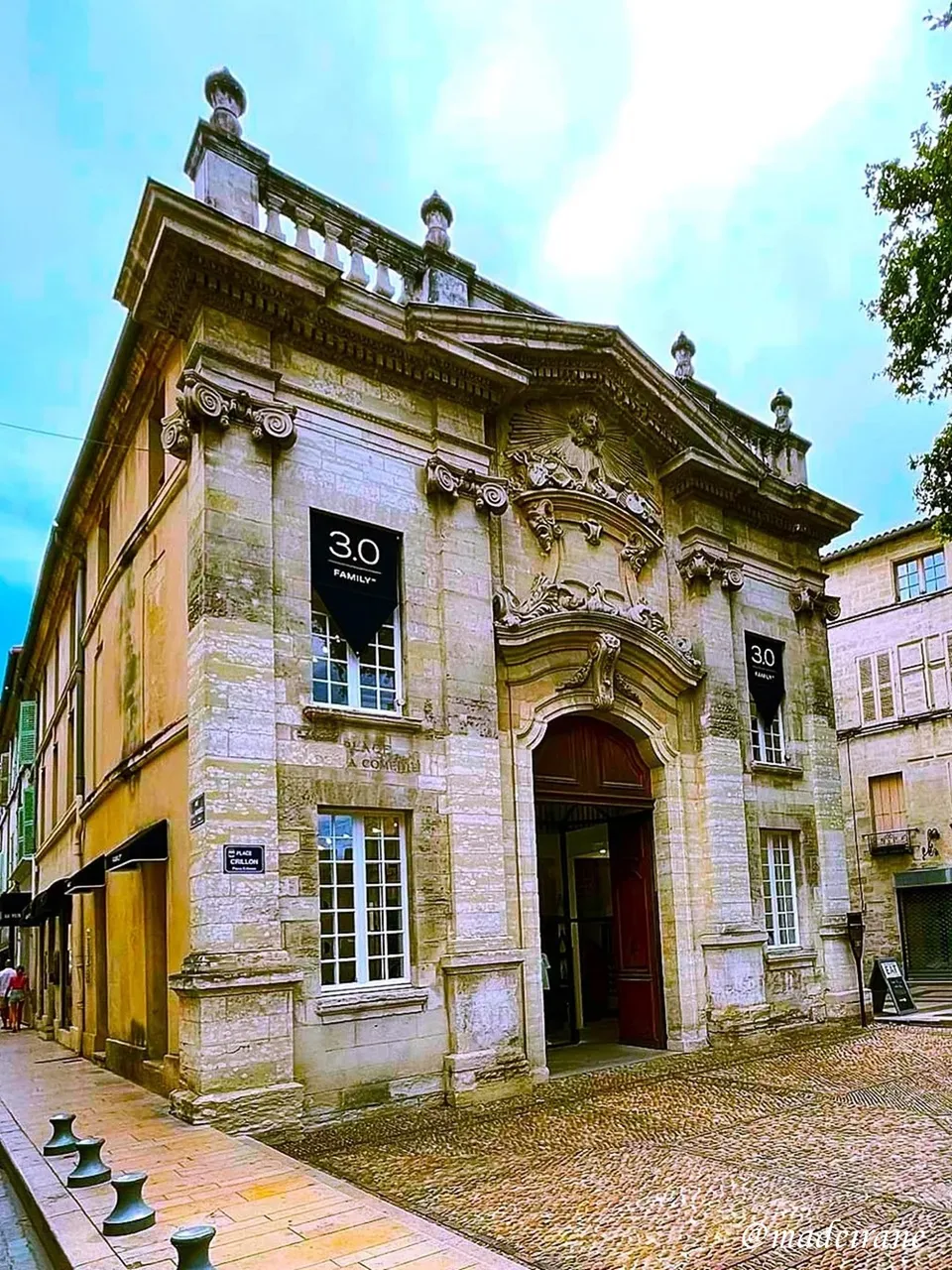
It's time to return to the palace square. In addition to the magnificent palace plus the cathedral pair, I cannot fail to note the building of the former Mint, in particular, the stucco molding that adorns it. Thus, I will show you a fragment of the coat of arms of Borghese - the "native" dynasty of Pope Paul V, in whose honor this wonderful architectural casket was erected in the Baroque style.
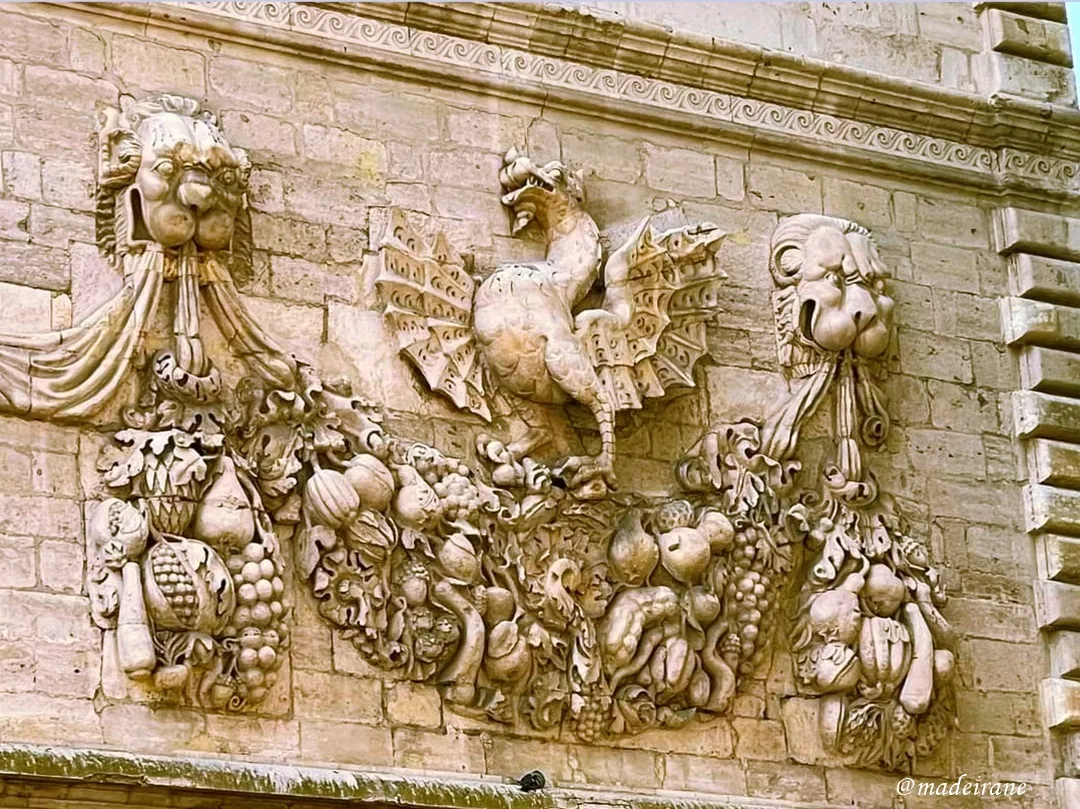
The doors of the palace (or rather, a complex of two palaces - the old and the new) were opened to visitors at nine o'clock. If you, like many other tourists, after exploring the palace, are going to walk along St. Benedict Bridge, or, in French, Saint-Benézet, I recommend buying a combined ticket to visit both sites - because to enter the amazing bridge, which is the symbol of Avignon, you need to pay.
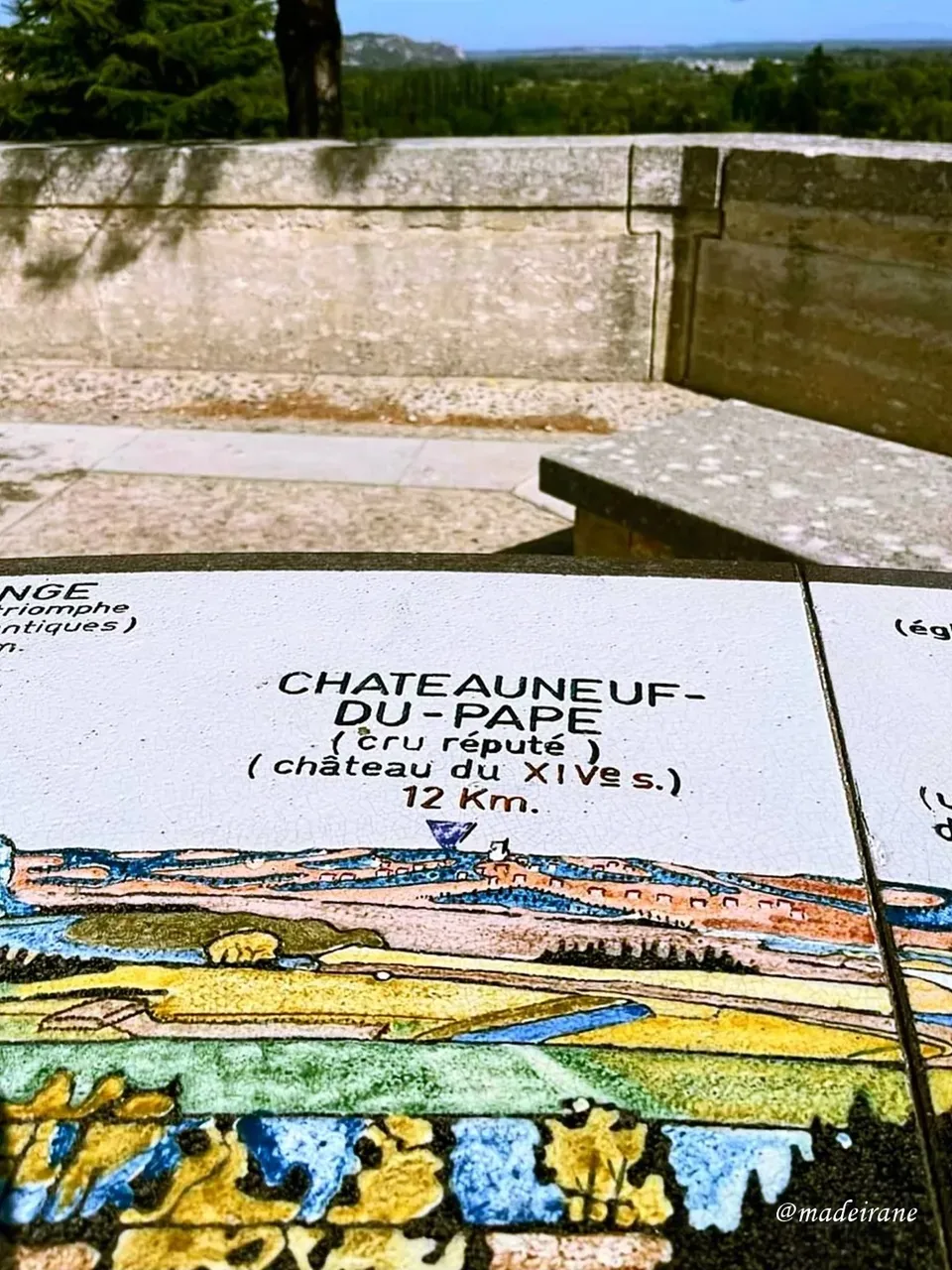
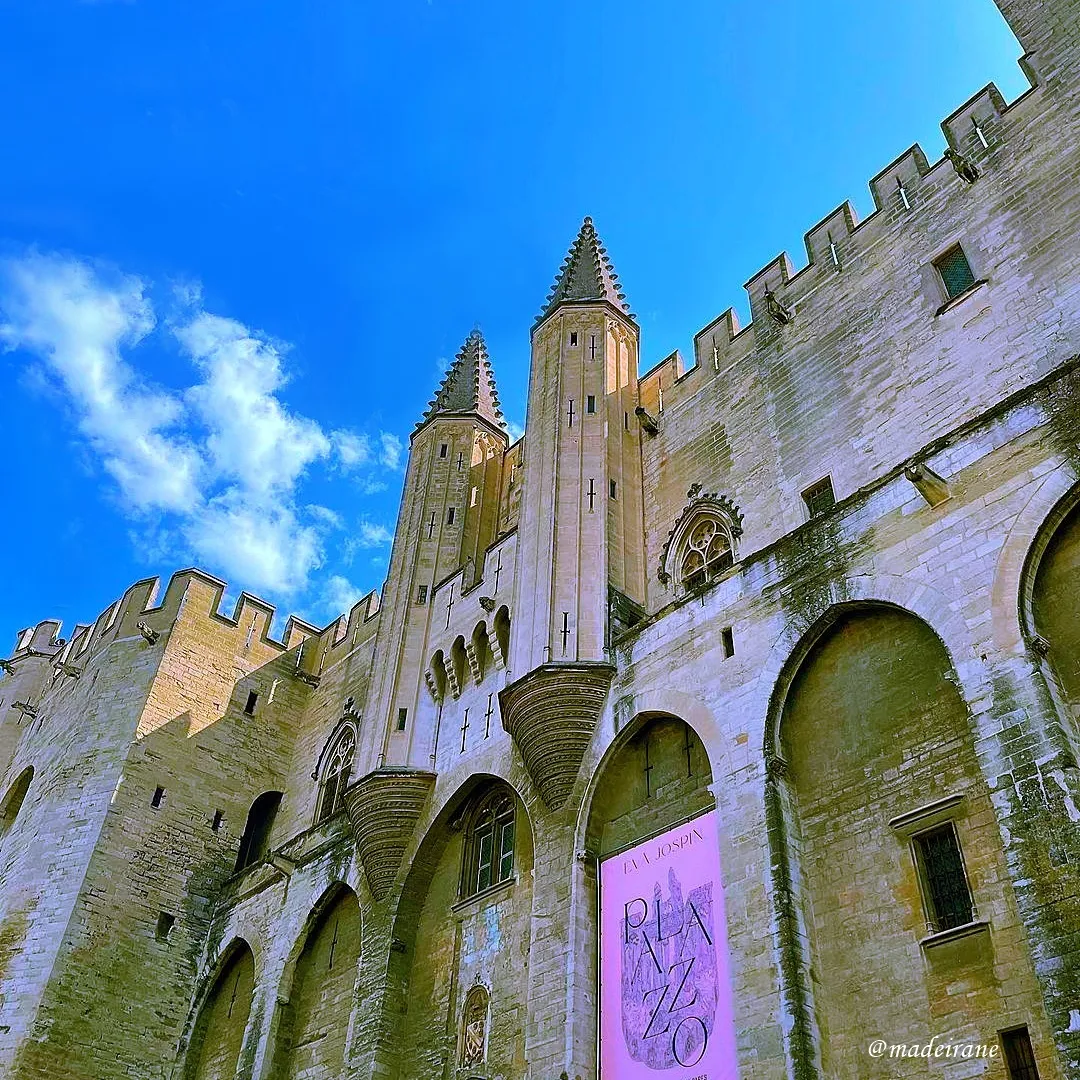
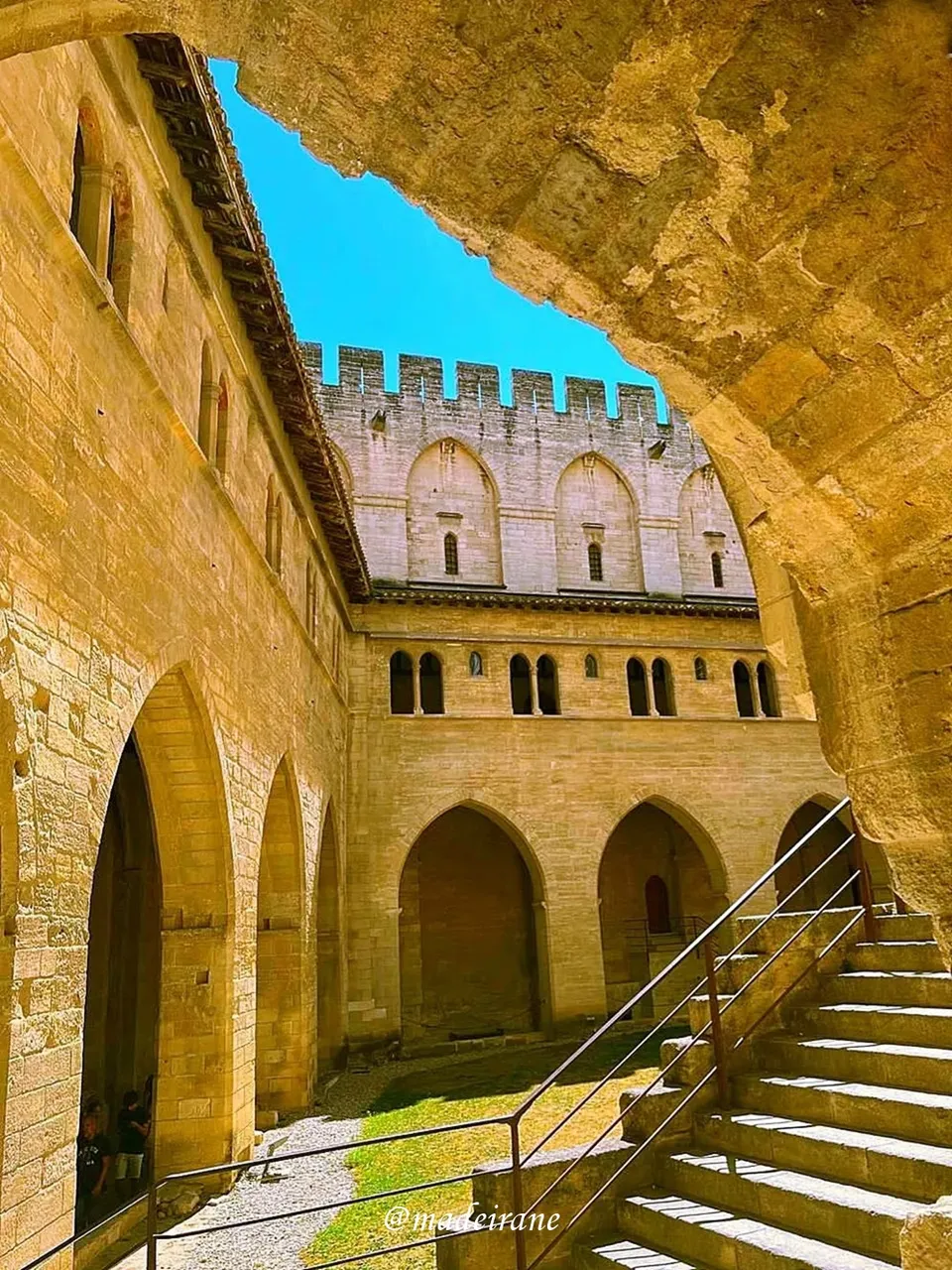
Photography was allowed only with restrictions, which, as one would expect, extended to all the most interesting halls. But I agree with the reason for taking these measures: the directorate is protecting the surviving priceless frescoes that adorn the walls of the papal apartments, the audience hall and the palace chapels of St. John and St. Martial. These frescoes, created by the artists Matteo Giovannetti and Simon Martini in the 14th century, represented a new word in Italian and French painting of those times.
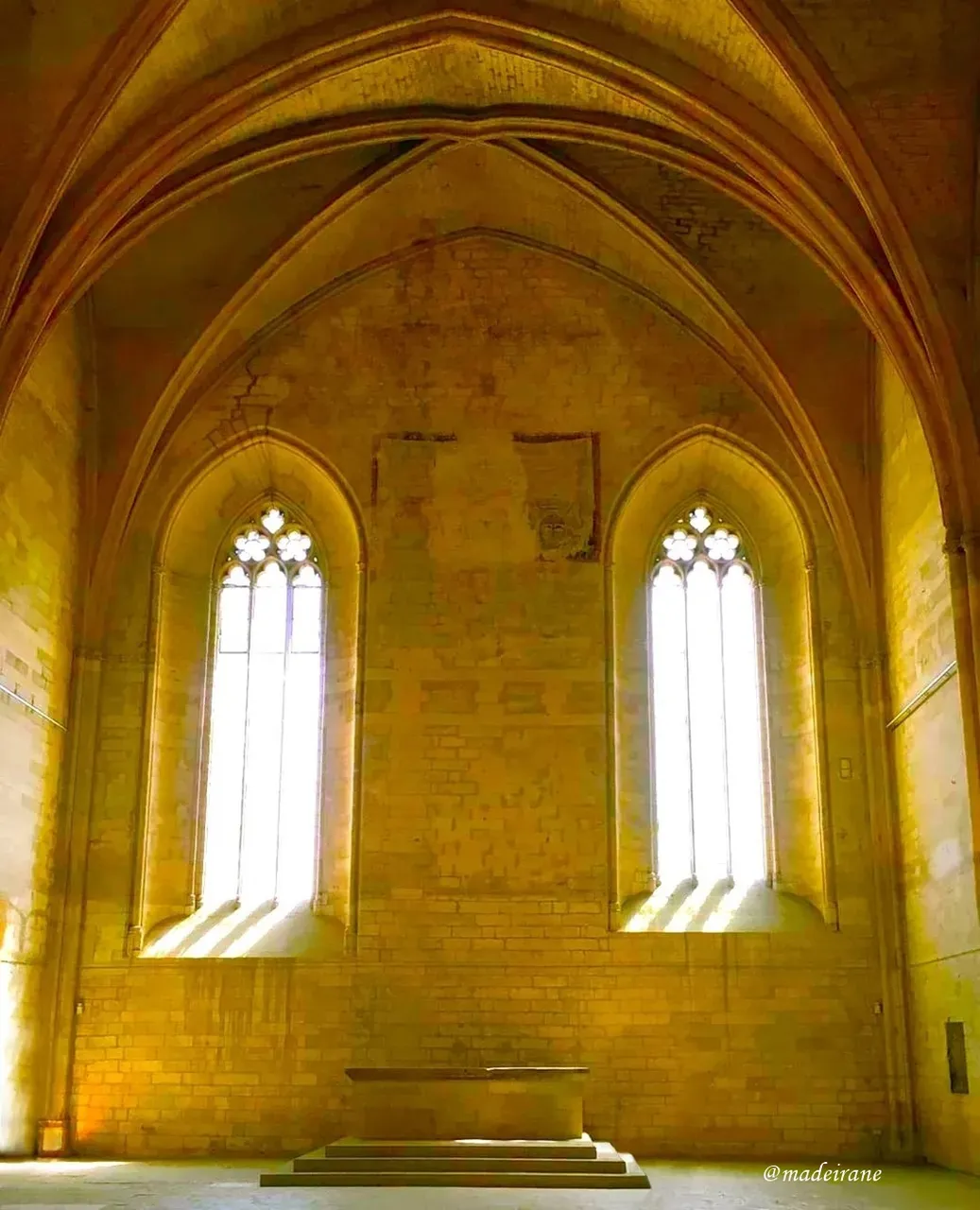
However, those paintings that can be seen in the so-called Deer Room - the study of Pope Clement VI, both chapels and other places, are really impressive. In my opinion, these are wonderful, albeit naive works.
Now I'm thinking - how to explain to all those who are "not in the know", without long historical references and deviations from the current rules of the project, why did the popes exchange the Eternal City for Avignon, having lingered in it for so many decades?
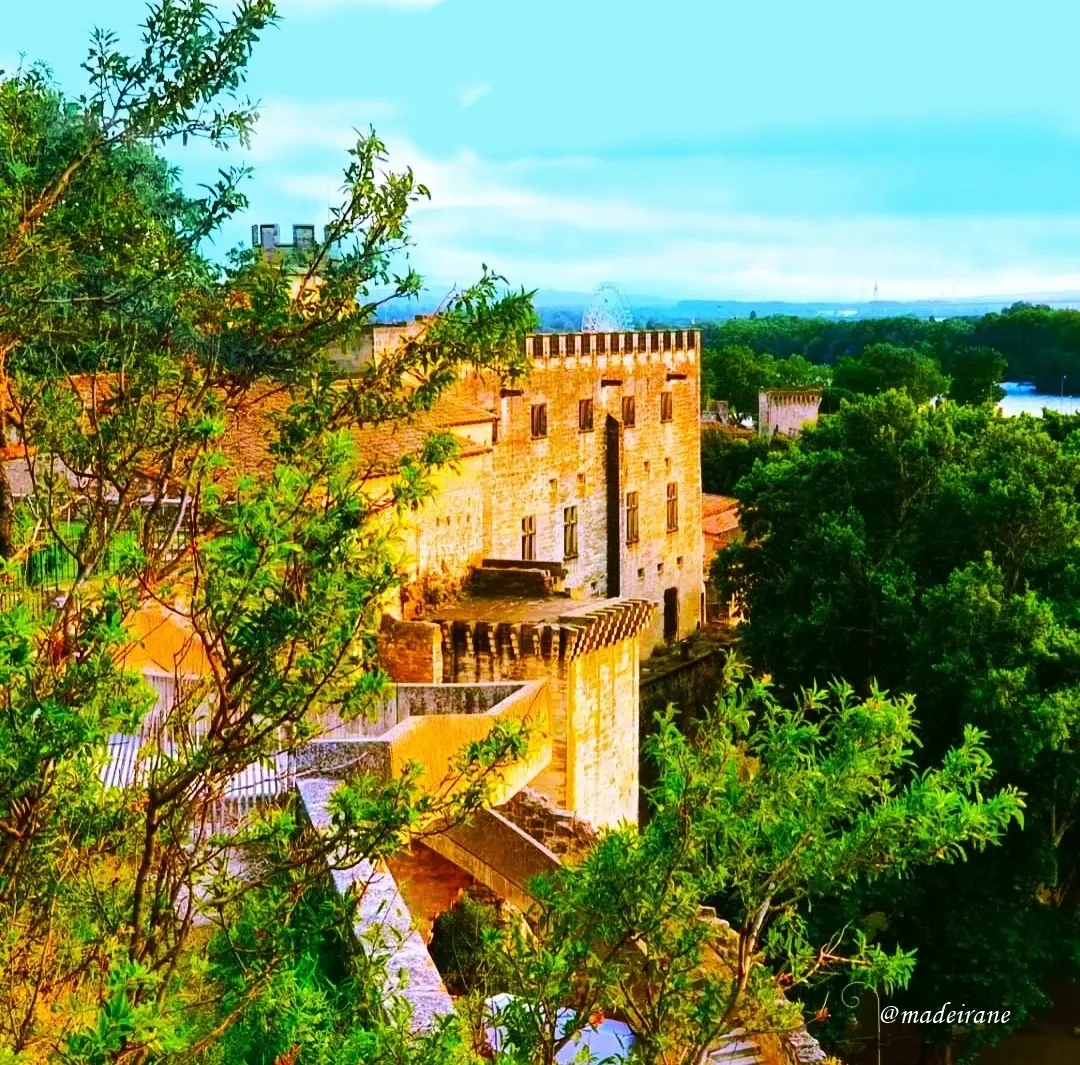
The rulers of different times and peoples traditionally dreamed of having higher clergy, especially the higher clergy of “their” nationality in their "pockets". And Philip IV, who ruled France, deservedly nicknamed "The Handsome", pursued the same goal. He managed to promote to the papal throne a Frenchman - an archbishop from Bordeaux, who, upon taking office, became known as Clement V. Unlike the "Italian" Pope Boniface VIII, Clement V was as friendly as possible towards the French.
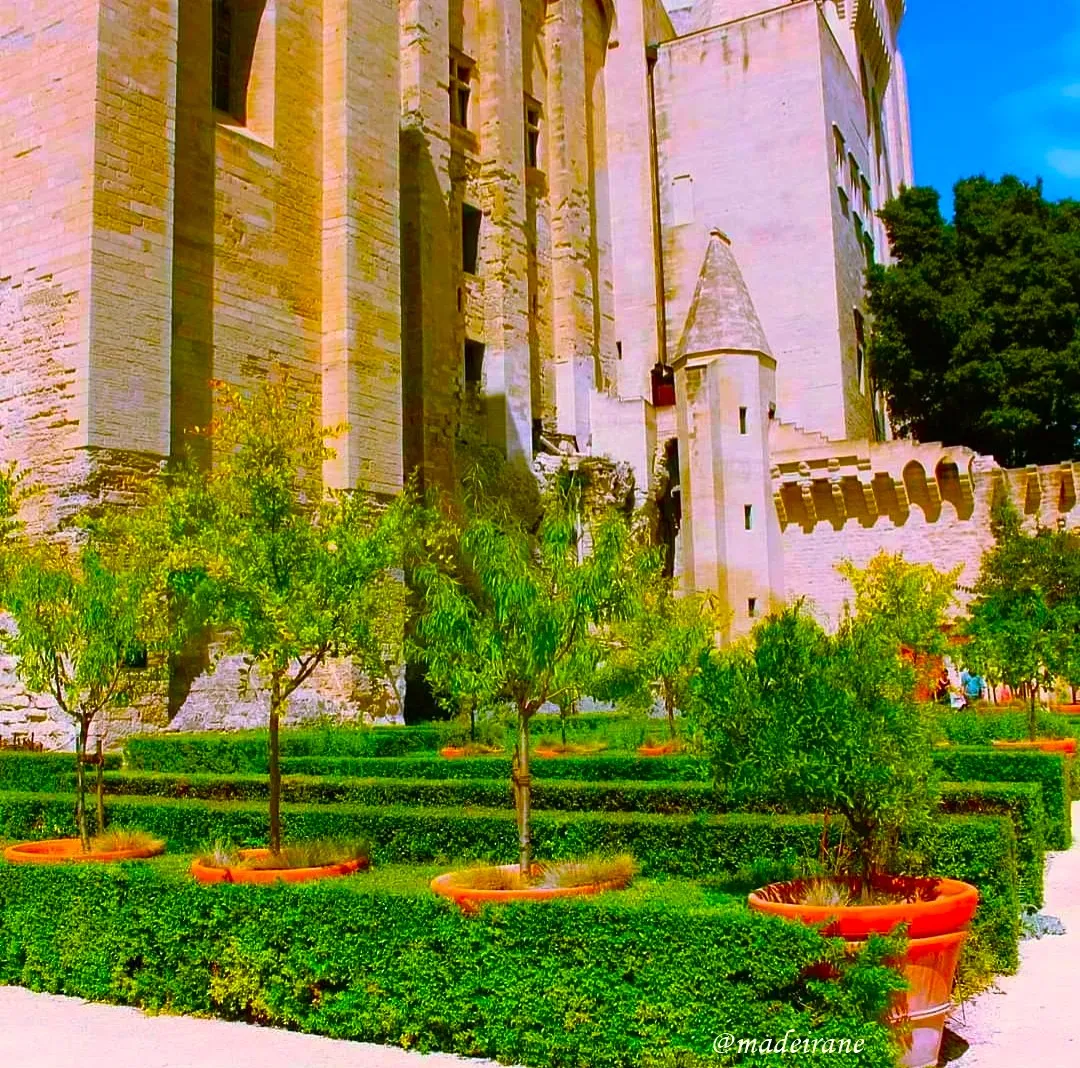
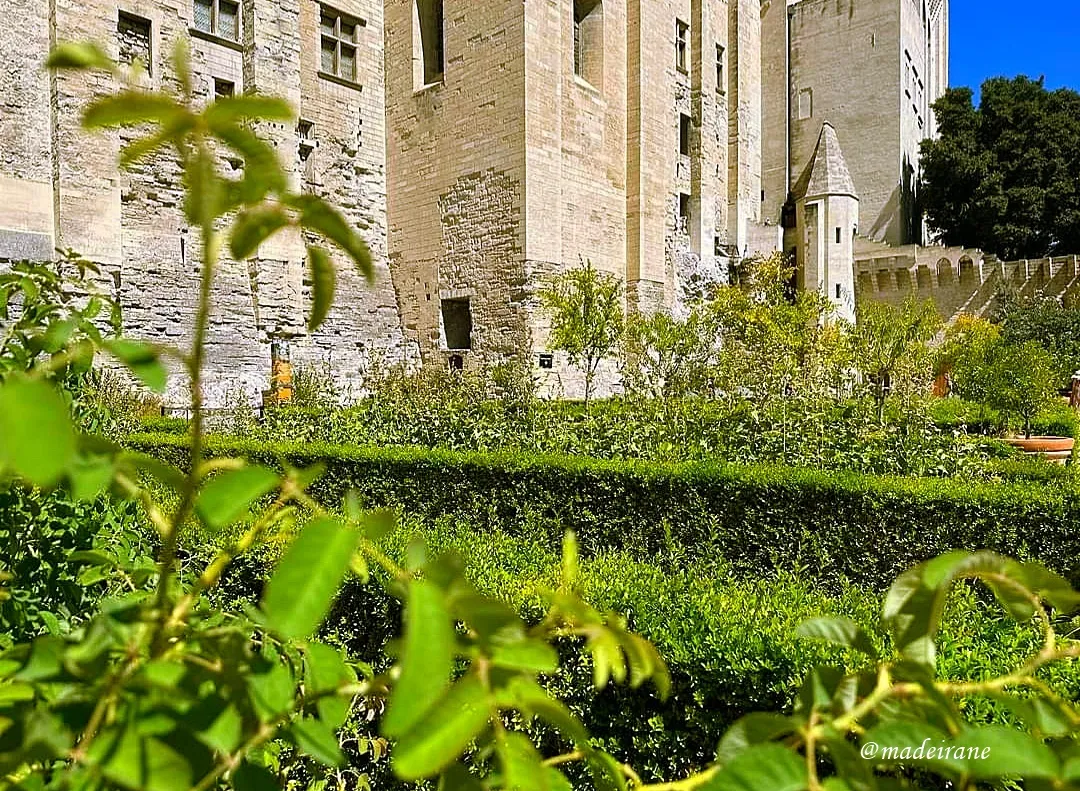
On the other hand, the place of Clement V, as usual, was claimed by a horde of those who wished, and if he were in Rome, with that fierce fight for papal power, he would easily have been cut off from "oxygen" - in the classical sense of this expression. Therefore, Clement V, as a temporary measure, moved to a relatively neutral territory - to Avignon, which at that time did not belong to France and had an extremely convenient geographical position.
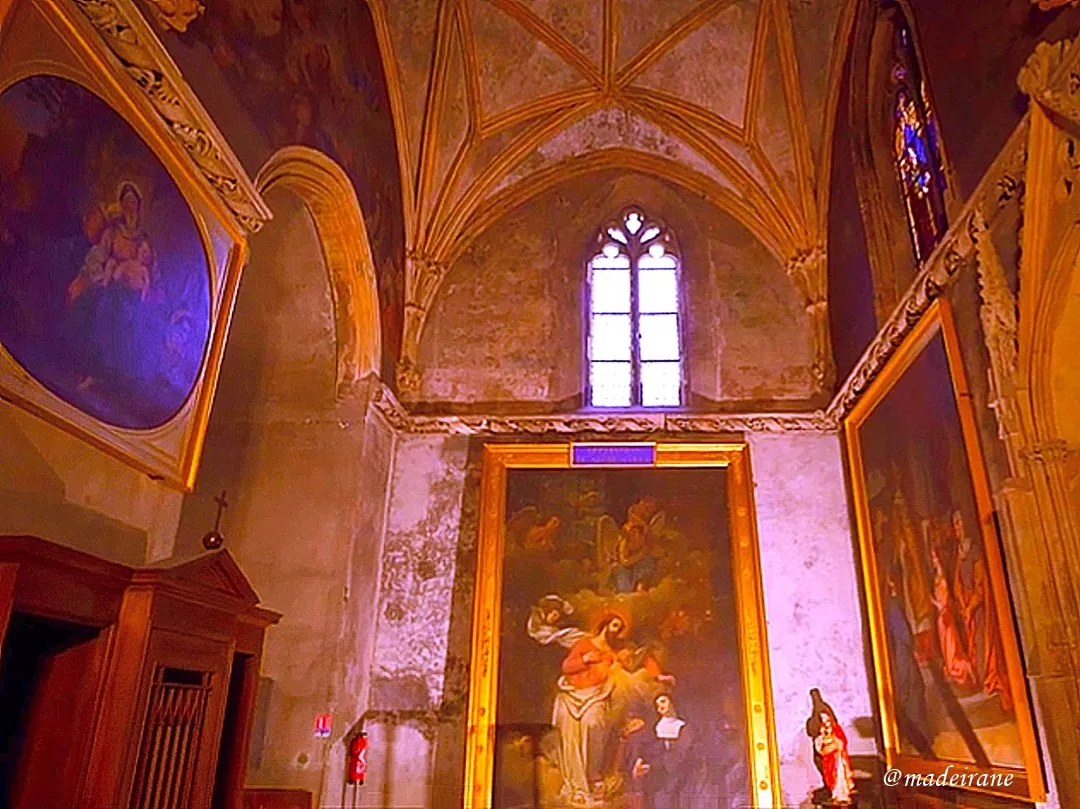
I will warn against a typical mistake of many tourists hoping to find a branch or a light version of the current Vatican in the Avignon palace. Sorry, but these are different centuries, different architecture, different trends in art and home improvement. And, moreover, a completely different story - with the great and terrible French Revolution, the looting and destruction of property, the placement of prisons and barracks, as well as the destruction of most of the frescoes.
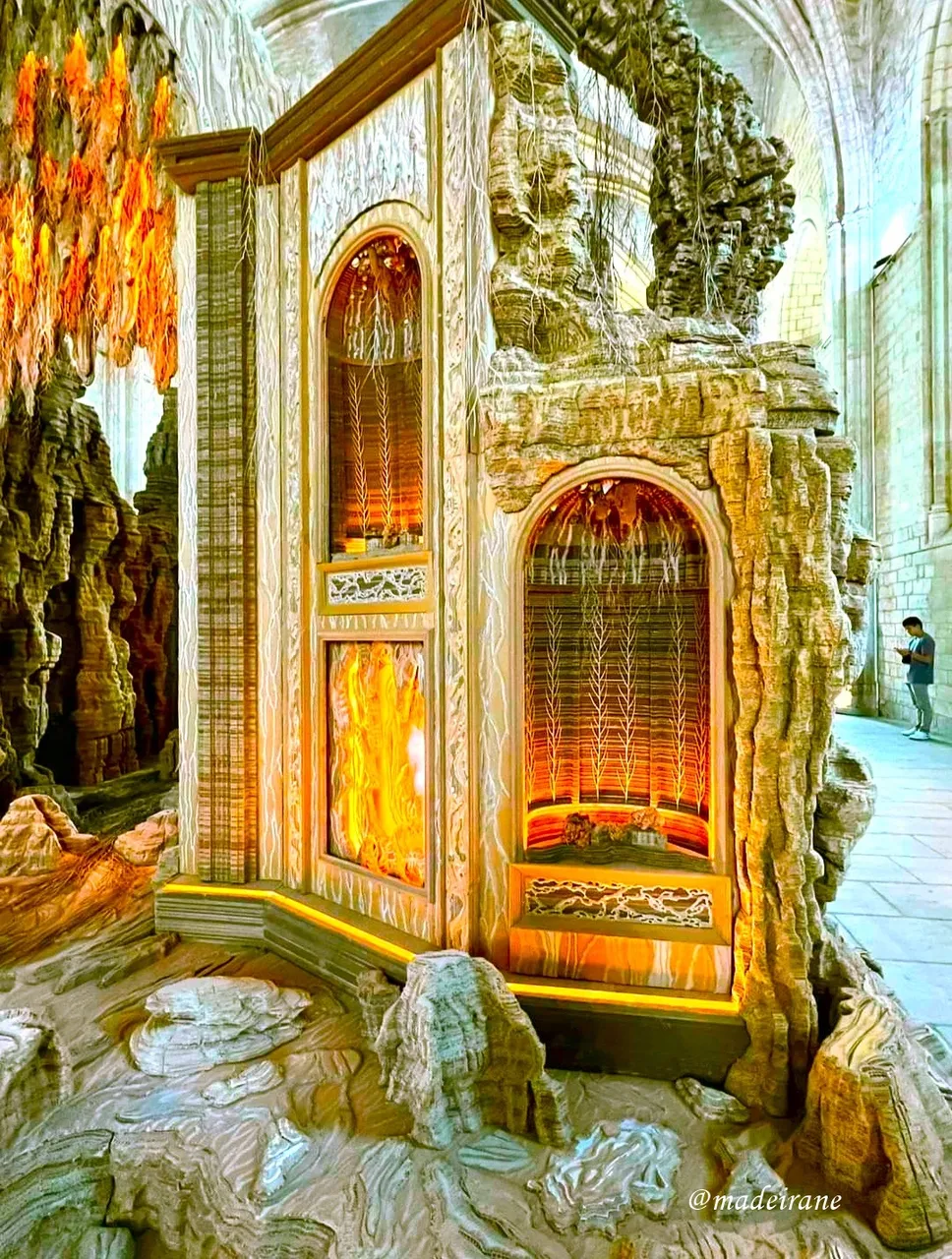

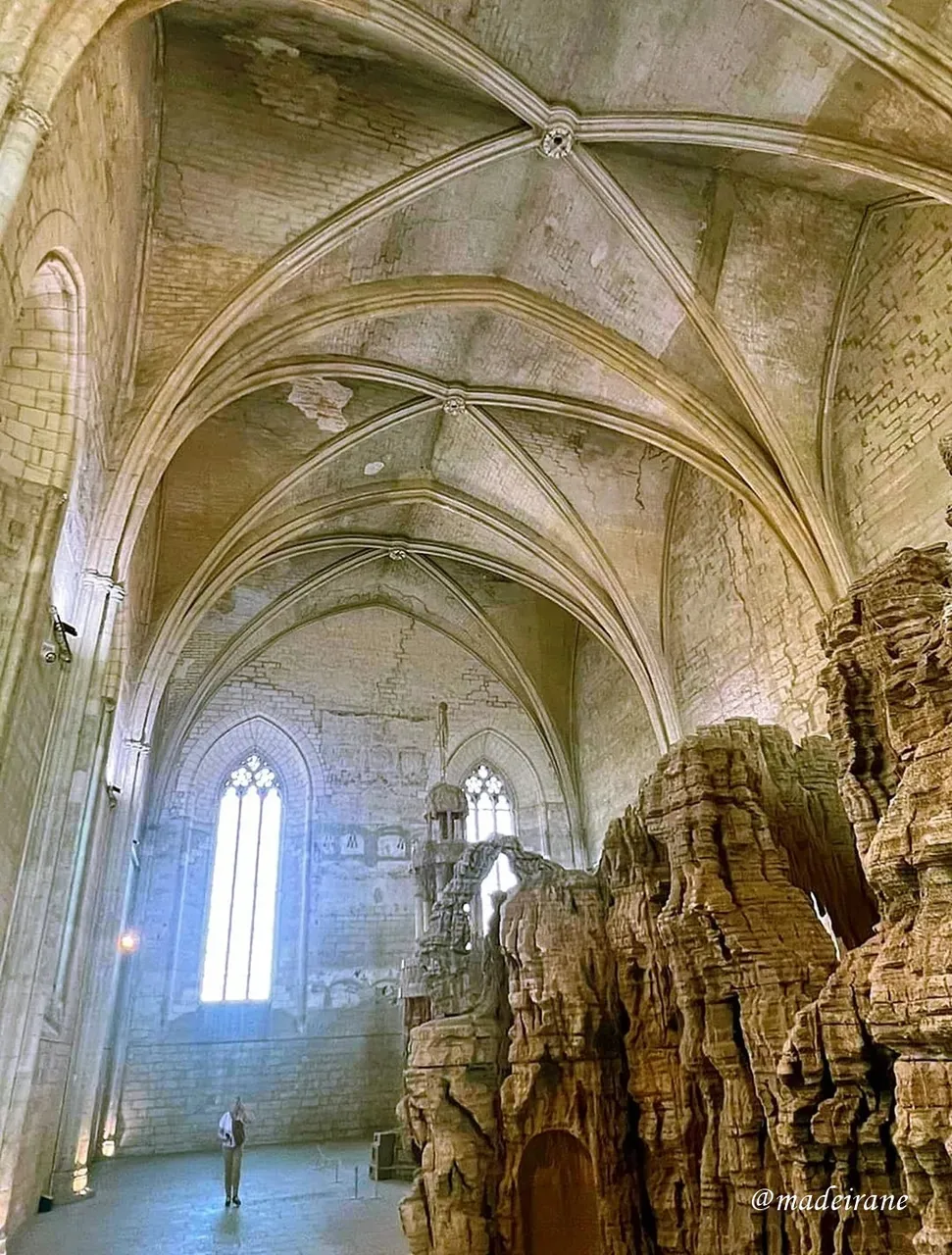
Even from those surviving fragments of frescoes and decorative elements that can be captured as a keepsake, it is easy to understand how beautiful the palace interiors were.
If someone is disappointed by the internal view of the palace, then located next to the cathedral gardens Rocher des Doms, unconditionally captivate with their charm and comfort. From these gardens, laid out on top of a high cliff, a series of views opens up that cannot be viewed without enjoyment. From here you can see the “neighbor” of Avignon - Villeneuve-les-Avignon with its formidable medieval fortress of Saint-Andre, and the banks of the Rhone and Durance buried in greenery, and the breaking bridge of Saint-Benezet.
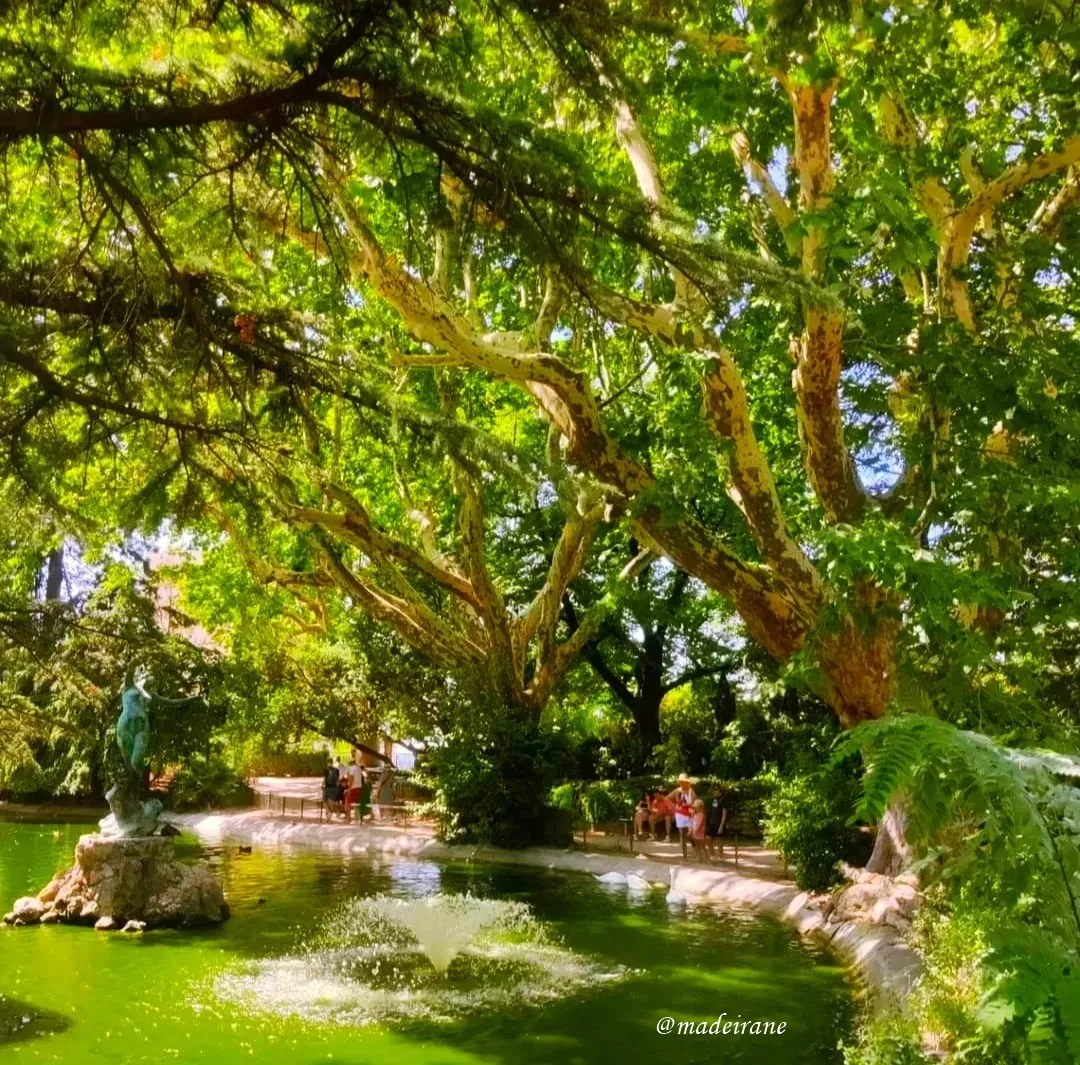
The gardens themselves are also a small feast for the soul. Moreover, in the conditions of a rather harsh Provencal summer, you perceive coolness and shade as a valuable gift. At first glance, the space is quite modest in size, but how much charm is in this artificial grotto, in the pond where the bronze “Venus with Swallows” by the sculptor Charpentier was placed, in the cheerful and hooligan flock of ducks surrounding its pedestal and in the intricate routes of orange carps koi! And an unusual sundial is “hidden” there, which has become an attraction for those who are trying to defeat astronomy with the help of astrology.
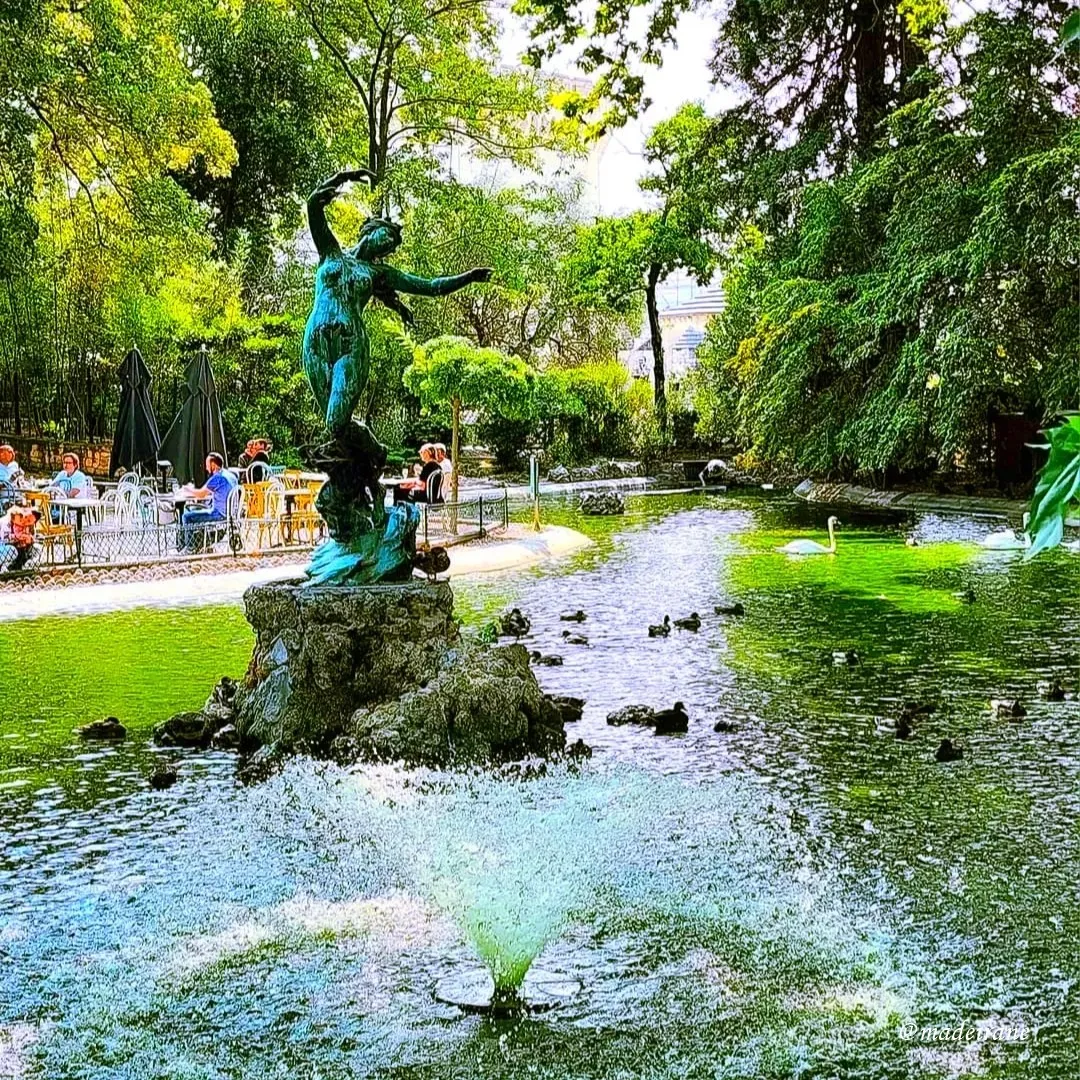
We descended from the gardens and moved towards the iconic bridge of Avignon - Saint-Benézet. Just imagine - XII century! Before such an architectural relic one stands in silent reverence. This striking example of medieval architecture has an amazing story. And, of course, a miracle must be present in this story. In this case, miracles were created by faith, which gives even a child strength for what seems unreal...
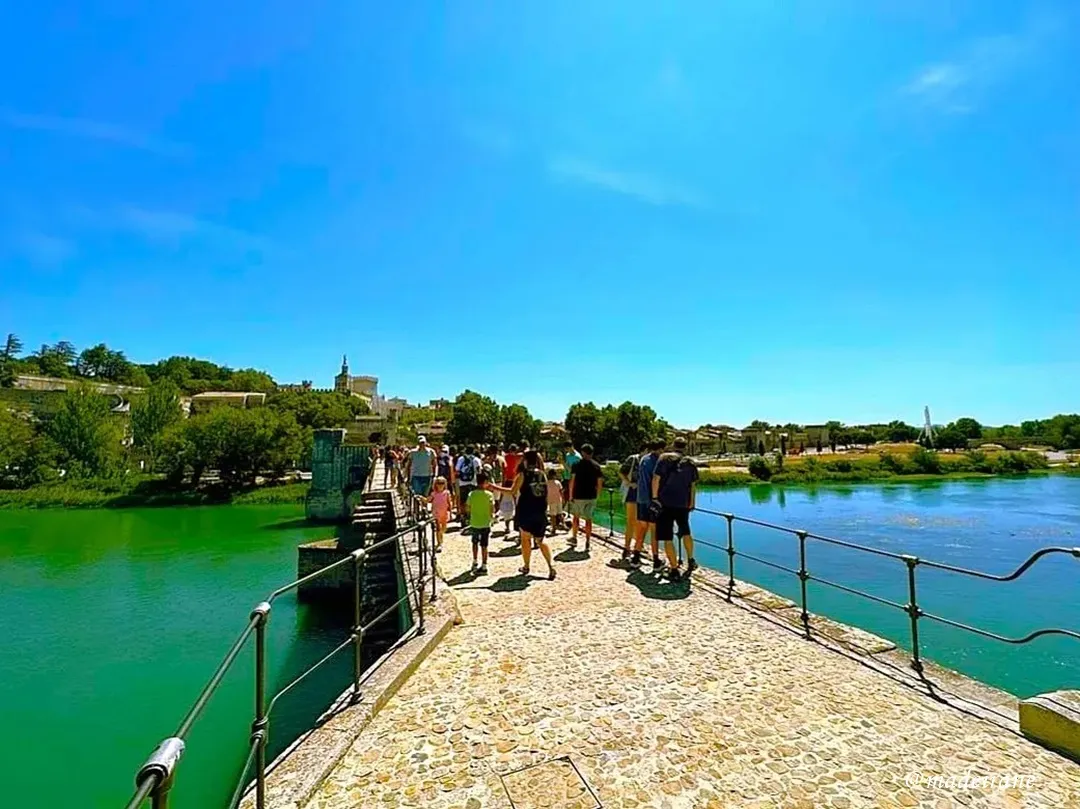
As usual, “first there was a word”, or rather, the voice of God, commanding the 12-year-old shepherd boy Benoit - the future Saint Beneza - to build a bridge across the Rhone. Fortunately, while fulfilling this mission, the boy encountered rather humane adults who did not execute him as a heretic. To convince them, he only had to lift one large-sized pebble, which was an exorbitant weight for several dozen men.
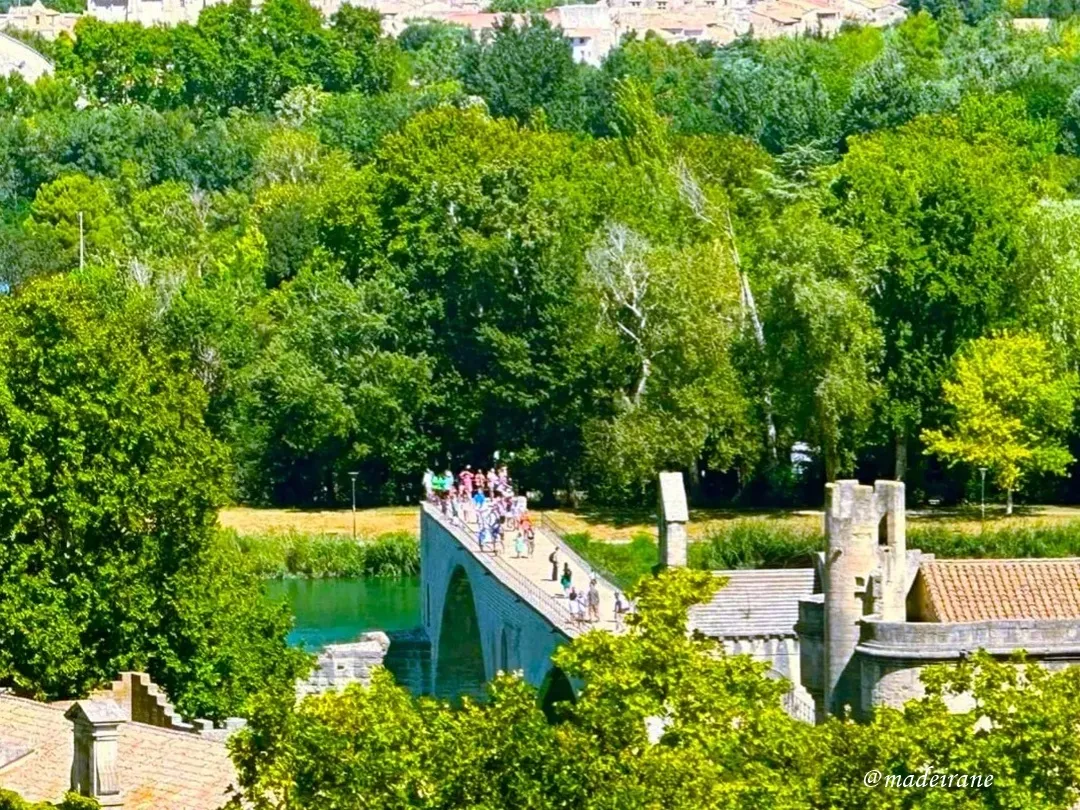
Formally, this story would have a happy ending if it were not for the regular destruction of spans by the stubborn and wayward Rona. Until the 60s of the 17th century, the spans were conscientiously restored and then they gave up on them. Since then, he has been standing there - a broken chain. And there is something mystical and symbolic in this cliff ... I note that the bridge is also included in the UNESCO register. A small and now empty chapel was built on the bridge where Saint Benese was originally laid to rest.
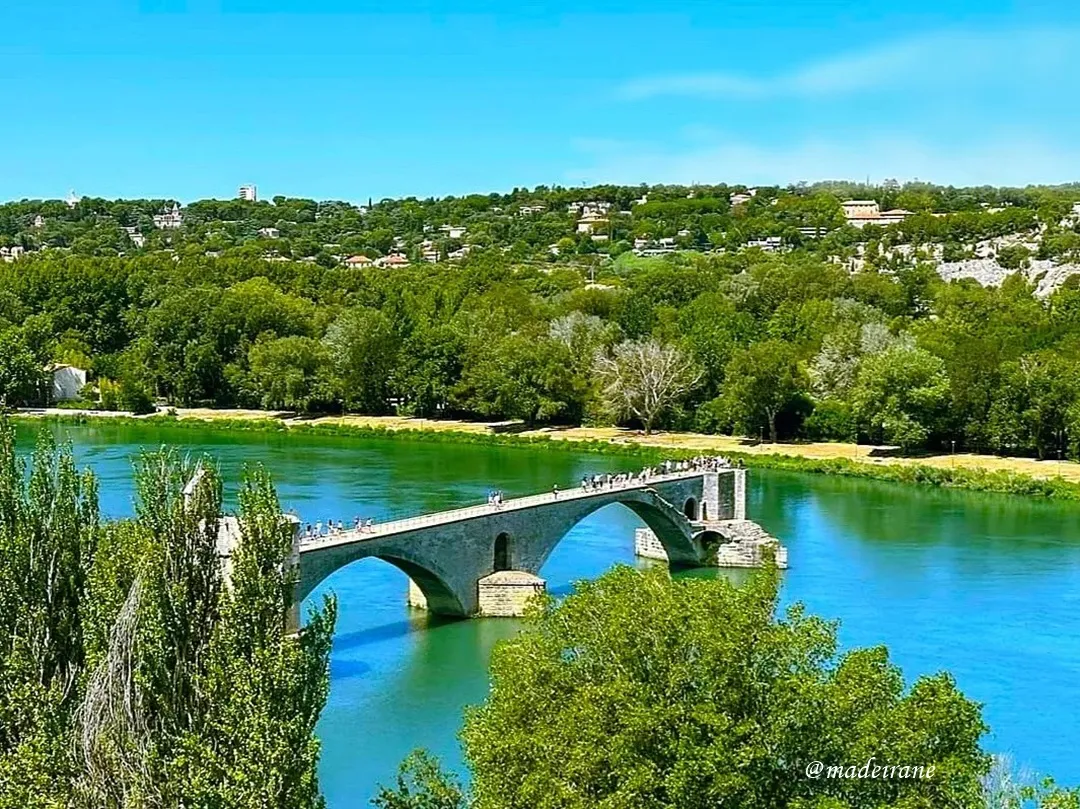
In terms of architecture, both of them represent the most solid Gothic of the XIV-XV centuries. Based on the name of the first church, many will think that it was consecrated in honor of the Apostle Peter. No, in this case we are talking about the heavenly patron of Avignon, St. Peter of Luxembourg. Therefore, his robe and hat are kept in the church.

But the Church of St. Pierre delighted me in other details: the most beautiful paintings, especially those that decorated the main altaffffr and choirs, as well as the amazing wood carvings on its doors.
In the second of the churches - Saint-Didier - my attention was attracted by the marvelous stone bas-relief "Carrying the Cross". It is believed to be one of the first Renaissance bas-reliefs to survive in Provence and France.
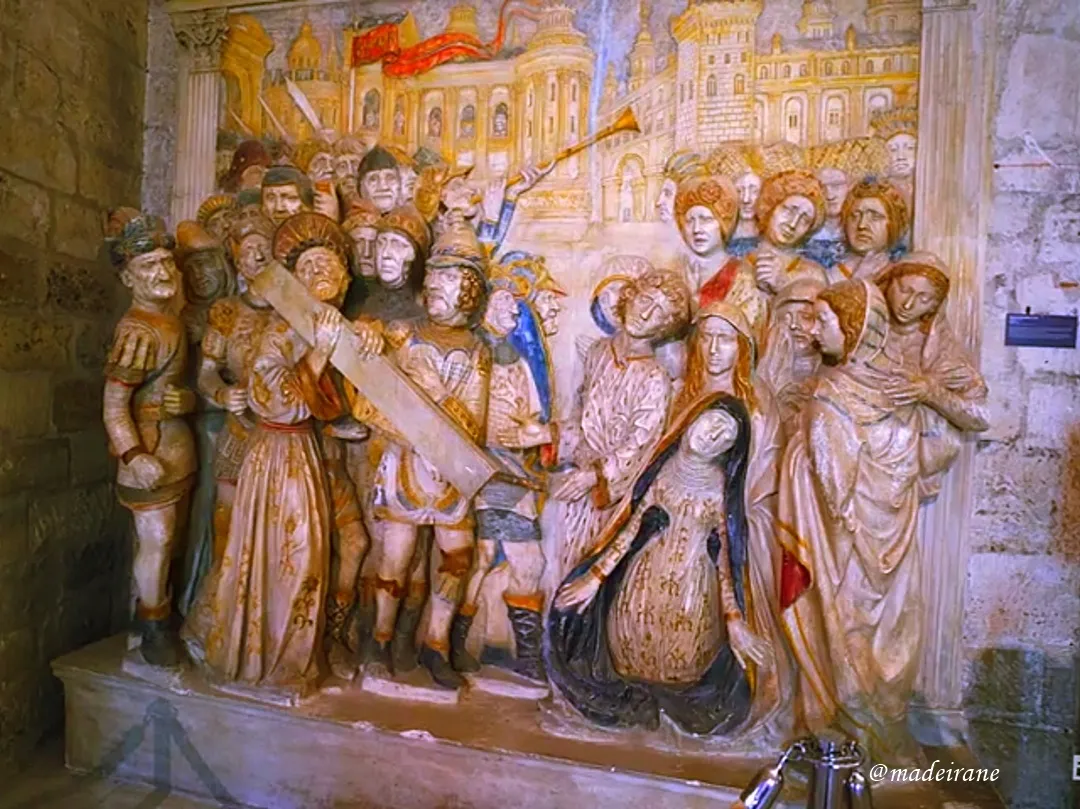
Avignon - this is a large, medieval historical city and it was a big pleasure to walk along its streets. Avignon is an interesting page in European history and a truly worthy monument to the old days.
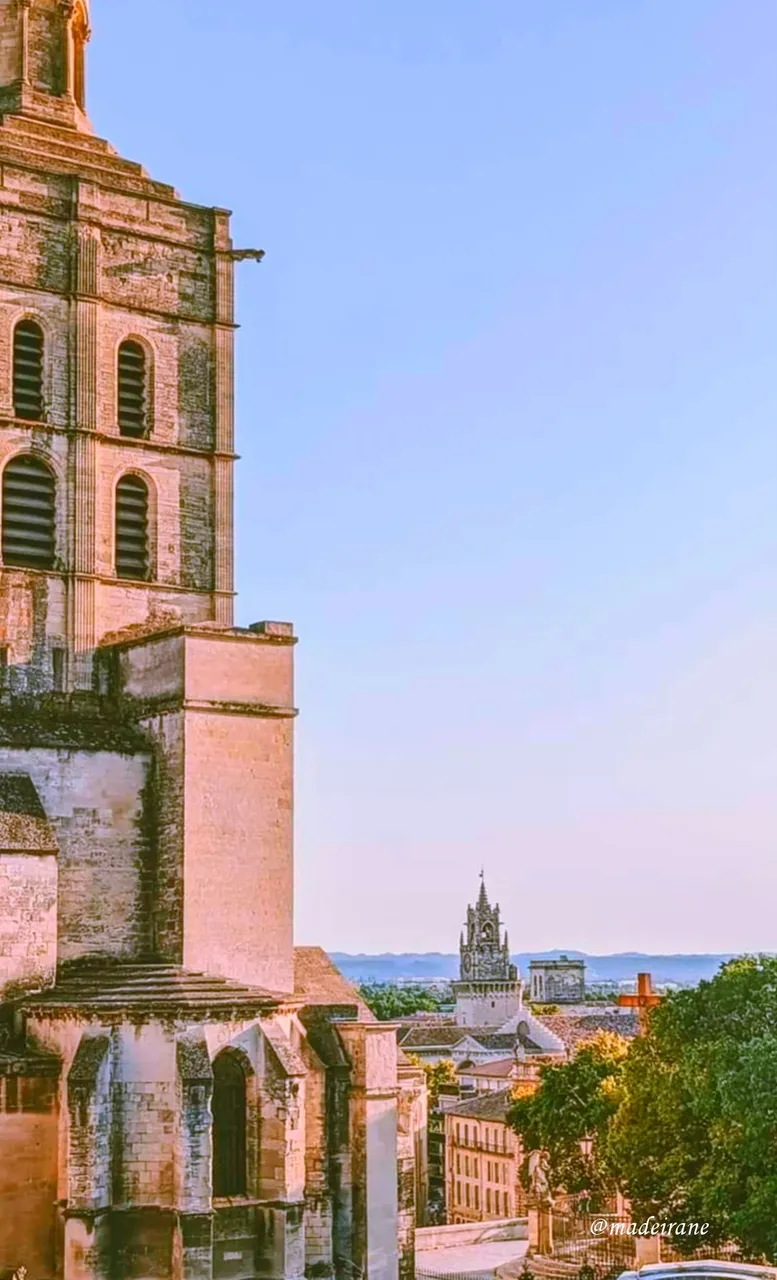
A vacation is not just a vacation. This is rest for our psychological health. Travel makes us happier, takes us away from everyday life, fills our lives with new impressions and memories. When I travel, I feel more space, which is so lacking in ordinary life. So, dare to travel and accumulate positive emotions.
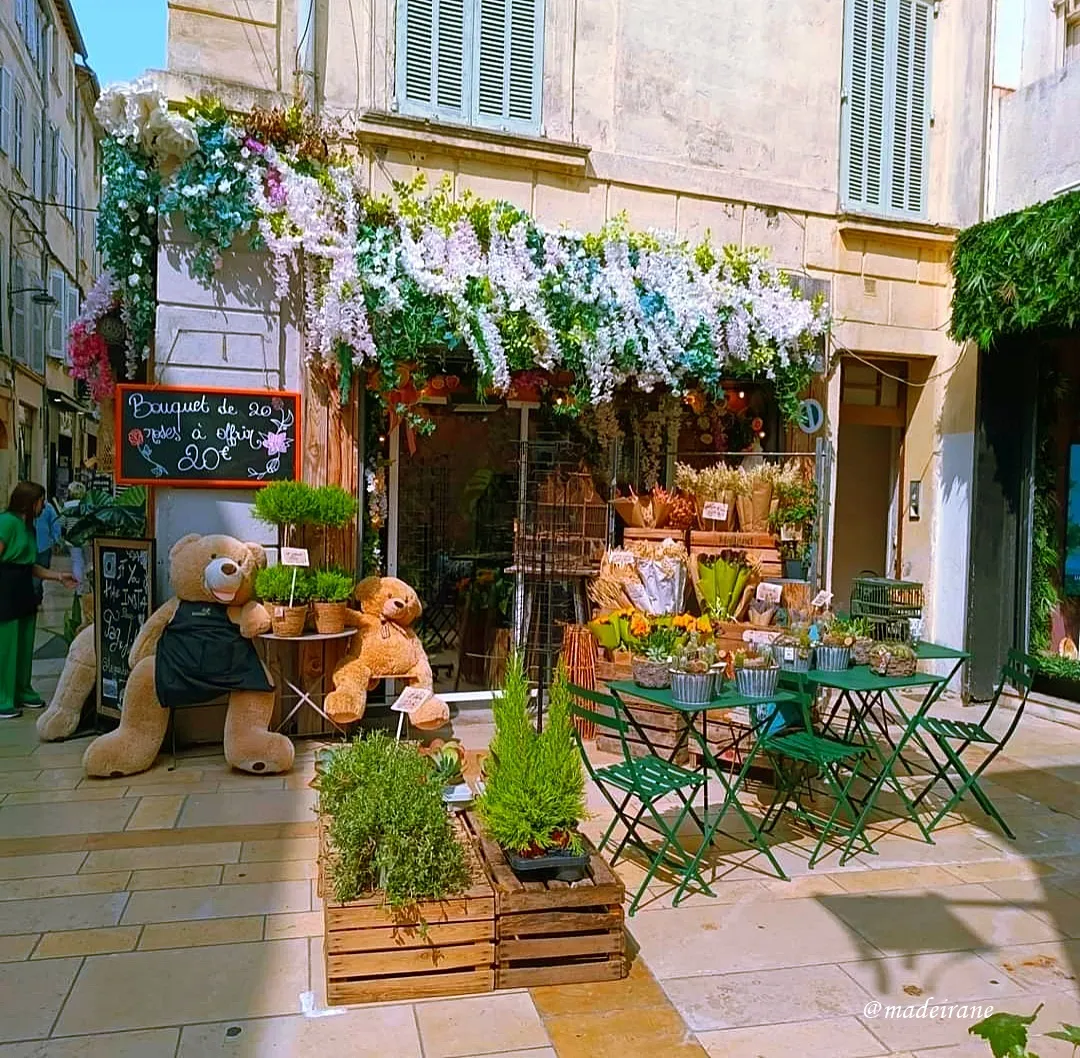
Translated from Lithuanian with DeepL (free version).
💝💝💝💝💝💝💝💝
With love, @madeirane
© 2023
Prancūzijos Avinjono miestu susidomėjau dar mokyklos laikais, kai mūsų namų bibliotekoje vienas po kito ėmė rodytis Maurice'o Druono "Prakeiktųjų karalių" serijos romanai. Skaitydamas šias knygas iš tiesų sužinojau, kad XIV a. pirmieji Katalikų Bažnyčios žmonės gyveno ne Romoje, o Avinjone.
Nepaisant dviejų tūkstančių metų istorijos, Avinjonas tebėra ramus provincijos miestelis, tačiau turtinga jo istorija siekia IV a. pr. m. e. Vienu metu Avinjonas buvo graikų kolonijos dalis, vėliau atiteko romėnams, po to galams, arabams, kol galiausiai tapo Prancūzijos dalimi.
Mano požiūriu, Avinjono žavesį sudaro dvi sąvokos. Tačiau jų visiškai pakanka, kad pajustume šiltus jausmus šiam senoviniam miestui. Pirmoji - tai beprotiškas (teigiama prasme) viduramžių architektūros lobių ir nuostabių vaizdų į Roną ir Durance upę rinkinys.
Įžengę į senamiestį iškart atsidūrėme galingų tvirtovės sienų ir dešimčių sargybos bokštų, išlikusių nuo giliųjų viduramžių, t. y. maždaug nuo XIV a., apsuptyje. Jo gatvėmis vaikščiojo Nostradamas, Petrarka (sutikęs savo meilę ir mūzą - Donną Laurą), Rabelais ... O už sienų ir medžių "slepiasi" nuostabūs romanikos, gotikos, baroko ir klasicizmo pavyzdžiai.
Kadangi buvo dar ne devynios valandos ryto, teko šiek tiek palaukti, kol išsipildys mano pagrindinė Avinjono svajonė - apsilankyti Popiežių rūmuose. Todėl, kol dar neatsidarė bilietų kasos, nusprendėme apžiūrėti rūmus iš išorės. O kartu ir ne mažiau didingą jų kaimynę - Notre-Dame des Doms katedrą. Šis tandemas - tikras architektūros lobis!
O kokių vaizdingų kampelių galima rasti šalia rūmų ir katedros! Kiek daug griežto grožio ir paslaptingumo buvo de la Peyrolerie gatvėje, gaubiančioje Popiežiaus rūmus! Šios aukštos milžiniškos sienos, šis vingiuotas siauras praėjimas... Atrodė, kad paskutiniame rate už kampo atsiras arba urvas su keistomis būtybėmis, arba portalas į kažkokį paslaptingą pasaulį.
Iš Notre-Dame des Doms varpinės bokšto auksinė Madona budriai stebi miestą.
Kaip norėjau pamatyti Avinjono Notre Dame iš vidaus (juolab kad ji dviem šimtmečiais senesnė už rūmus), nes daug skaičiau apie jos freskas ir skulptūras.
Prie įėjimo į Notre-Dame des Doms įrengta skulptūrinė kompozicija - nukryžiuotasis Kristus, prieš kurį klūpo akmeniniai angelai.
Netoli Popiežiaus rūmų Notre-Dame des Doms yra dar vienas į UNESCO sąrašą įtrauktas objektas - XIII a. pastatyti mažieji rūmai, kurie buvo vietos vyskupų rezidencija. Čia sukaupta nuostabi meno kūrinių kolekcija - Botticelli, Carpaccio ir kitų italų renesanso meistrų darbai!
Pasinaudodami nedidele laiko atsarga, apžiūrime Laikrodžio aikštę. Teritorija gana didelė, bet ypač nėra kur apsisukti, nes joje kamuolį valdo kavinių ir restoranų staliukai. Kodėl ji vadinama Laikrodžių aikšte? Atsakymas į šį klausimą: tiesiai virš jos kyla gotikos stiliumi įkomponuotas ažūrinis laikrodis. Visiškai teisingai: toks pavadinimas - dėl laikrodžio bokšto, likusio nuo sugriautos rotušės.
Vėliau rotušės pastatą pakeitė XIX a. iškilęs rotušės pastatas. Ant jo, kaip ir tikėtasi, kabo Provanso, Prancūzijos ir ES vėliavos bei nuostabus, bet sudėtingas šūkis "Laisvė, lygybė, brolybė".
Netoli miesto rotušės yra Operos teatro pastatas. Prie jo įėjimo stovi Moljero ir Kornelio statulos. Dviejų iškilių dramaturgų atminimas čia įamžintas neatsitiktinai: toje pačioje vietoje anksčiau veikė sudegusios komedijos teatras. Įdomu tai, kad, nepaisant pavadinimo "Opera", teatro repertuare yra ir paprastų spektaklių.
Tačiau jei kalbėtume apie Avinjono aikštes, man labiau patiko ne Laikrodžio aikštė, o Krilono aikštė - dėl savo intymumo ir jaukumo su lengvu bohemiškumo prieskoniu.
Laikas grįžti į rūmų aikštę. Be didingos rūmų ir katedros poros, negaliu nepastebėti buvusios monetų kalyklos pastato, ypač jį puošiančio stiuko lipdinio. Taigi, parodysiu jums Borgezių herbo fragmentą - popiežiaus Pauliaus V "gimtosios" dinastijos, kurios garbei baroko stiliumi buvo pastatyta ši nuostabi architektūrinė trobelė.
Devinta valanda. Rūmų (tiksliau, dviejų rūmų - senųjų ir naujųjų - komplekso) durys atveriamos lankytojams. Jei, kaip ir daugelis kitų turistų, po rūmų apžiūros ketinate pasivaikščioti Šventojo Benedikto tiltu, arba, prancūziškai, Saint-Benézet, rekomenduoju įsigyti kombinuotą bilietą abiem objektams aplankyti - nes norint patekti ant nuostabaus tilto, kuris yra Avinjono simbolis, reikia susimokėti.
Fotografuoti buvo leidžiama tik su apribojimais, kurie, kaip ir reikėjo tikėtis, apėmė visas įdomiausias sales. Tačiau sutinku su šių priemonių taikymo priežastimi: direkcija saugo išlikusias neįkainojamas freskas, kurios puošia popiežiaus apartamentų, audiencijų salės ir rūmų koplyčių - Šv. Šios freskos, kurias XIV a. sukūrė dailininkai Matteo Giovannetti ir Simonas Martini, reiškė naują žodį to meto italų ir prancūzų tapyboje.
Tačiau tie paveikslai, kuriuos galima pamatyti vadinamajame Elnių kambaryje - popiežiaus Klemenso VI kabinete, abiejose koplyčiose ir kitose vietose, yra tikrai įspūdingi. Mano nuomone, tai nuostabūs, nors ir naivūs kūriniai.
Dabar galvoju - kaip be ilgų istorinių nuorodų ir nukrypimų nuo dabartinių projekto taisyklių paaiškinti visiems "neišmanėliams", kodėl popiežiai iškeitė Amžinąjį miestą į Avinjoną, prabuvę jame tiek dešimtmečių? Bet vis dėlto surizikuosiu ir pabandysiu.
Viena vertus, įvairių laikų ir tautų valdovai tradiciškai svajojo turėti savo kišenėse aukštąją dvasininkiją, ypač "savo" tautybės aukštąją dvasininkiją. Ir Prancūziją valdęs Pilypas IV, pelnytai pramintas "Gražuoliu", siekė to paties tikslo. Jam pavyko į popiežiaus sostą paaukštinti prancūzą - arkivyskupą iš Bordo, kuris, pradėjęs eiti pareigas, tapo žinomas kaip Klemensas V. Kitaip nei "italas" popiežius Bonifacas VIII, Klemensas V buvo kuo draugiškiausiai nusiteikęs prancūzų atžvilgiu.
Kita vertus, į Klemenso V vietą, kaip įprasta, pretendavo būrys norinčiųjų, ir jei jis būtų buvęs Romoje, vykstant tai įnirtingai kovai dėl popiežiaus valdžios, jis būtų buvęs lengvai atkirstas nuo "deguonies" - klasikine šios sąvokos prasme. Todėl Klemensas V laikinai persikėlė į palyginti neutralią teritoriją - į Avinjoną, kuris tuo metu nepriklausė Prancūzijai ir turėjo itin patogią geografinę padėtį.
Perspėsiu dėl tipiškos daugelio turistų klaidos, kai jie tikisi Avinjono rūmuose rasti dabartinio Vatikano filialą ar lengvą versiją. Atleiskite, bet tai skirtingi šimtmečiai, skirtinga architektūra, skirtingos meno ir namų tobulinimo tendencijos. Ir, be to, visiškai kitokia istorija - su didžiąja ir baisiąja Prancūzijos revoliucija, turto plėšimu ir naikinimu, kalėjimų ir kareivinių įrengimu, taip pat daugumos freskų sunaikinimu.
Net ir iš tų išlikusių freskų fragmentų ir puošybos elementų, kuriuos galima įamžinti atminčiai, nesunku suprasti, kokie gražūs buvo rūmų interjerai:
Jei kas nors yra nusivylęs vidaus vaizdas rūmų, tada įsikūręs šalia katedros sodai Rocher des Doms, besąlygiškai sužavėti savo žavesio ir komforto. Iš šių sodų, įrengtų ant aukštos uolos viršūnės, atsiveria daugybė vaizdų, į kuriuos neįmanoma žiūrėti be malonumo. Iš čia matosi Avinjono "kaimynas" - Villeneuve-les-Avignon su grėsminga viduramžių tvirtove Saint-Andre, žalumoje paskendę Ronos ir Durance upių krantai ir lūžtantis Saint-Benezet tiltas.
Patys sodai taip pat yra maža šventė sielai. Be to, gana atšiaurios Provanso vasaros sąlygomis vėsa ir pavėsis yra vertinga dovana. Iš pirmo žvilgsnio erdvė gana kukli, tačiau kiek daug žavesio slypi šioje dirbtinėje grotoje, tvenkinyje, kuriame pastatyta skulptoriaus Charpentier bronzinė "Venera su gulbėmis", linksmame ir chuliganiškame ančių pulke, supančiame jos pjedestalą, ir įmantriuose oranžinių karpių koi maršrutuose! Čia "paslėptas" ir neįprastas saulės laikrodis, tapęs atrakcija tiems, kurie astrologijos pagalba bando nugalėti astronomiją.
Nusileidžiame iš sodų ir judame link žymaus Avinjono tilto - Saint-Benézet. XII a.! Prieš tokią architektūrinę relikviją stovi su tylia pagarba. Ir savaime suprantama, kad šį įstabų viduramžių architektūros pavyzdį tiesiog privalu lydėti, tačiau kartu su juo pasakojama nuostabi jo atsiradimo istorija. Ir, žinoma, šioje istorijoje turi būti stebuklas. Šiuo atveju stebuklus sukūrė tikėjimas, kuris net vaikui suteikia jėgų tam, kas atrodo nerealu...
Kaip įprasta, "pirma buvo žodis", tiksliau, Dievo balsas, įsakęs dvylikamečiui piemenėliui Benoitui - būsimam šventajam Benezui - pastatyti tiltą per Roną. Laimei, vykdydamas šią misiją, berniukas susidūrė su gana humaniškais suaugusiaisiais, kurie jo nešaudė kaip eretiko. Kad juos įtikintų, jam tereikėjo pakelti vieną didelio dydžio akmenuką, kuris kelioms dešimtims vyrų buvo pernelyg didelis svoris.
Formaliai ši istorija baigtųsi laimingai, jei ne užsispyrusi ir nepaklusni Rona, kuri nuolat naikina tarpeklius. Iki pat XVII a. 60-ųjų metų spanieliai buvo sąžiningai restauruojami, o paskui jų atsisakyta. Nuo to laiko jis stovi ten - nutrūkęs nuo grandinės. Ir šioje uoloje yra kažkas mistiško ir simboliško ... Atkreipiu dėmesį, kad tiltas įtrauktas ir į UNESCO registrą. Ant tilto pastatyta nedidelė ir dabar tuščia koplytėlė, kurioje iš pradžių ilsėjosi šventasis Benediktas.
Avinjone mums nepasisekė aplankyti kelių garsių šventyklų. Tačiau šią nesėkmę kompensavo pažintis su dviem įdomiausiomis - Saint-Pierre ir Saint-Didier.
Architektūriniu požiūriu abu jie yra solidžiausios XIV-XV a. gotikos pavyzdžiai. Remdamiesi pirmosios bažnyčios pavadinimu, daugelis pagalvos, kad ji buvo pašventinta apaštalo Petro garbei. Ne, šiuo atveju kalbame apie dangiškąjį Avinjono globėją, šventąjį Petrą Liuksemburgietį. Todėl bažnyčioje saugomi jo drabužiai ir kepurė.
Tačiau Švento Pjero bažnyčia mane sužavėjo kitomis detalėmis: gražiausiais paveikslais, ypač tais, kurie puošė pagrindinį altorių ir choralus, taip pat nuostabiais medžio raižiniais ant jos durų.
Antrojoje iš bažnyčių - Saint-Didier - mano dėmesį patraukė nuostabus akmeninis bareljefas "Kryžiaus nešimas". Manoma, kad tai vienas pirmųjų renesansinių bareljefų, išlikusių Provanse ir Prancūzijoje.
Avinjonas - tai didelis, viduramžiškas istorinis miestas, todėl buvo labai malonu vaikščioti jo gatvėmis. Avinjonas - tai įdomus Europos istorijos puslapis ir vertas senųjų laikų paminklas.
Atostogos - tai ne tik atostogos. Tai poilsis mūsų psichologinei sveikatai. Kelionės daro mus laimingesnius, atitraukia nuo kasdienybės, pripildo mūsų gyvenimą naujų įspūdžių ir prisiminimų. Keliaudamas jaučiu daugiau erdvės, kurios taip trūksta įprastame gyvenime. Taigi, išdrįskite keliauti ir kaupti teigiamas emocijas.
💝💝💝💝💝💝💝💝💝💝
Su meile, @madeirane
Nuotraukos darytos mano.
© 2023